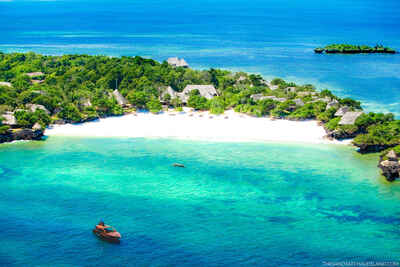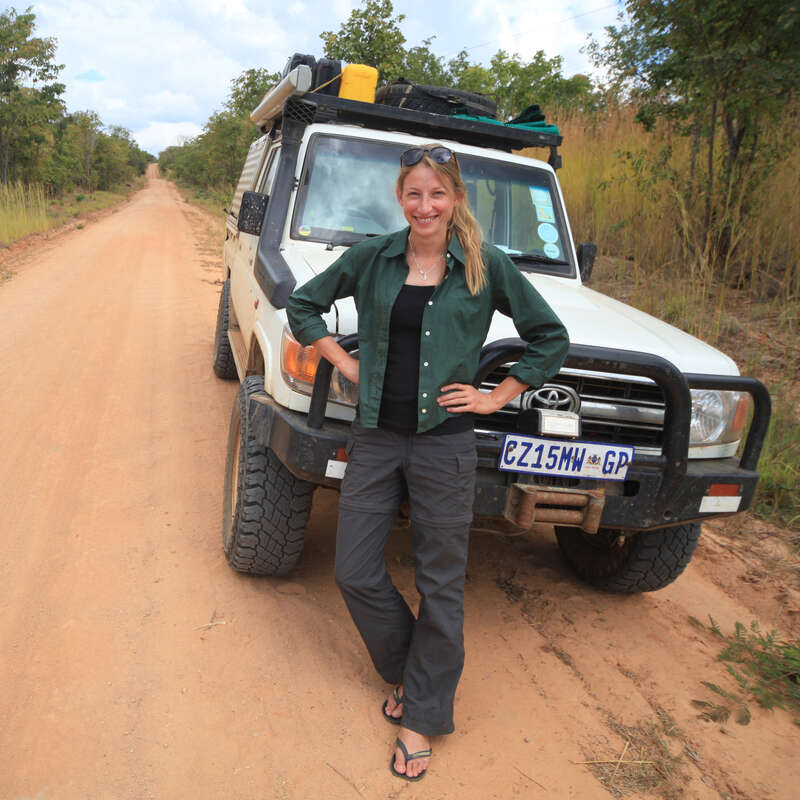About The Sands at Chale Island
The Sands at Chale Island is a stylish and private beach resort located on the 900m by 300m Chale Island.
Situated just a stone's throw off Kenya's mainland, the resort occupies the north of the island, while the southern part is covered by indigenous forest and is actually a Mijikenda kaya – one of this people's ancestral village sites that are scattered along the Kenyan coast. The Sands at Chale has been designed to blend in perfectly with the island's natural environment and the lodge emphasises low-impact, sustainable tourism.
We think the Sands at Chale is a good spot if you're looking for a secluded beach stay on the Kenyan coast. With 60 rooms this is one of larger places we feature on the Kenyan Coast, however with three pools and a wide expanse of beach there is plenty of space, and the island still feels quiet even when full. We love the island setting and this is a wonderful option for some rest and relaxation before or after a safari.
Our view
We think the Sands at Chale is a good spot if you're looking for a secluded beach stay on the Kenyan coast. With 60 rooms this is one of larger places we feature on the Kenyan Coast, however with three pools and a wide expanse of beach there is plenty of space, and the island still feels quiet even when full. We love the island setting and this is a wonderful option for some rest and relaxation before or after a safari.
Accommodation
60 rooms
Children
Good for all ages
Open
All year
Activities

Birdwatching

Boat trip

Scuba-diving

Snorkelling

Watersports
Traveller reviews of The Sands at Chale Island
3 real, un-edited reviews from Expert Africa's travellers.
Arrived 24 Jun 2023, 6 nights
"The Sands at Chale Island review"
Overall rating: Excellent
Arrived 11 Feb 2023, 4 nights
"The Sands at Chale Island review"
Overall rating: Good
Arrived 3 Sep 2018, 2 nights
"The Sands at Chale Island review"
Overall rating: Good
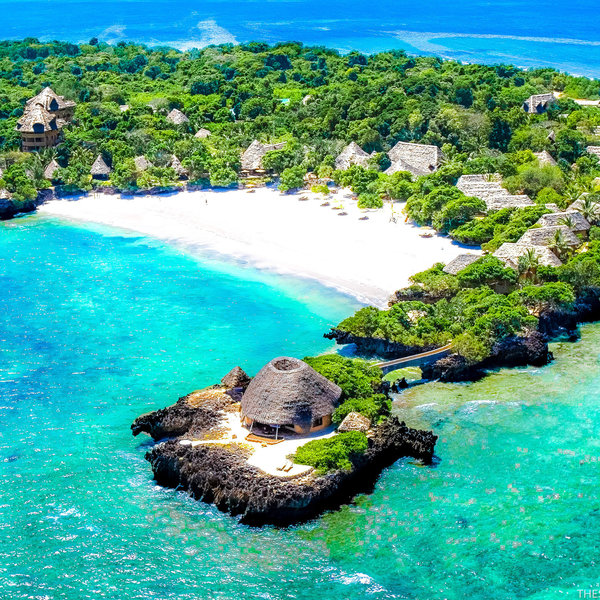
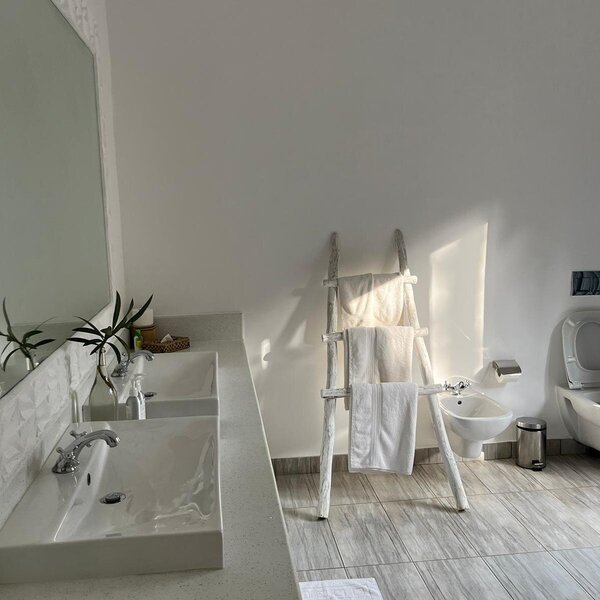
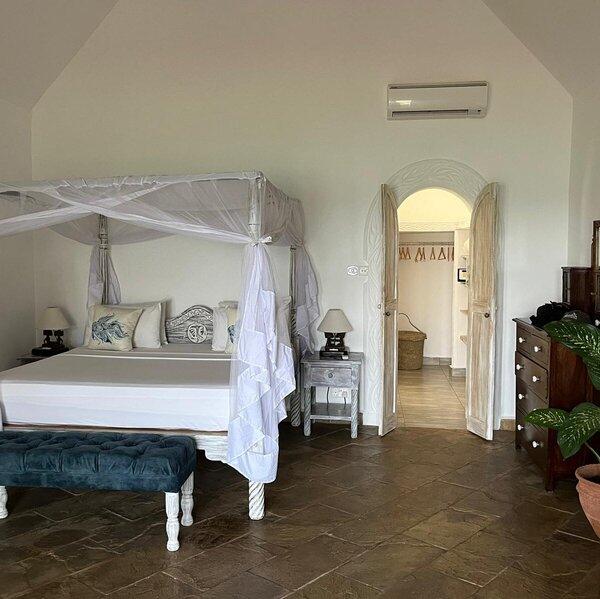
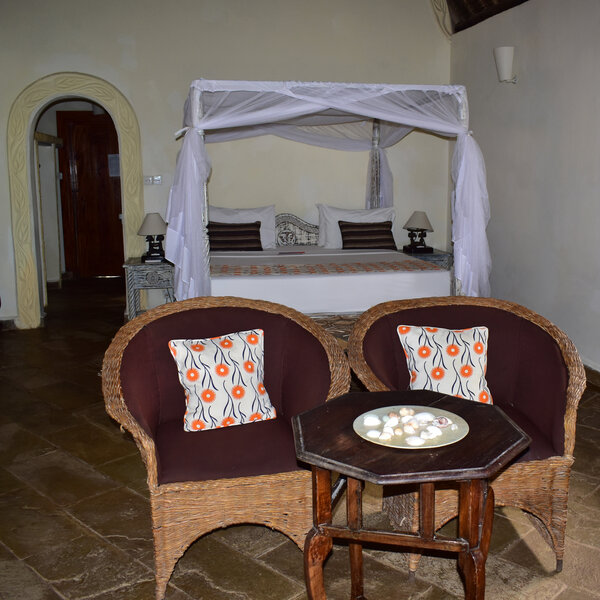
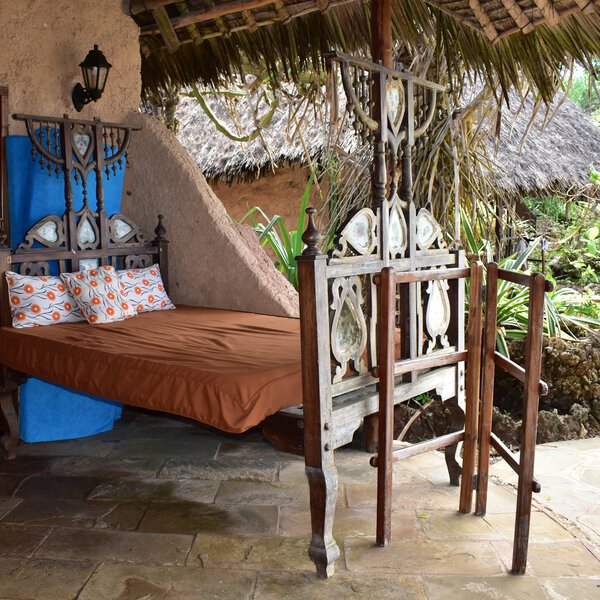
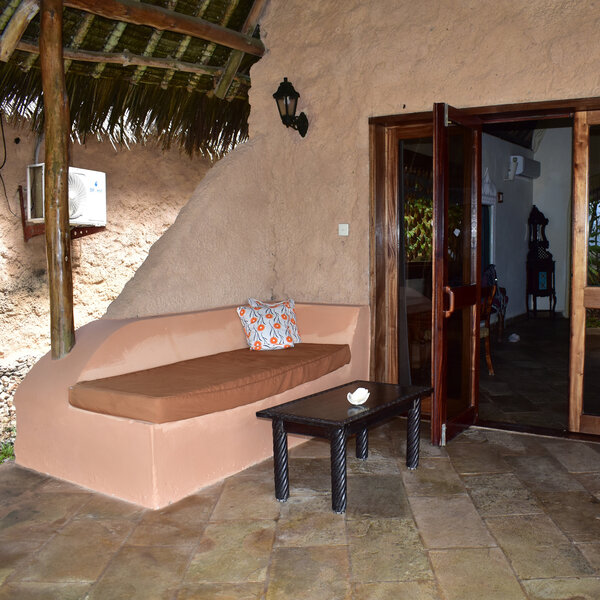
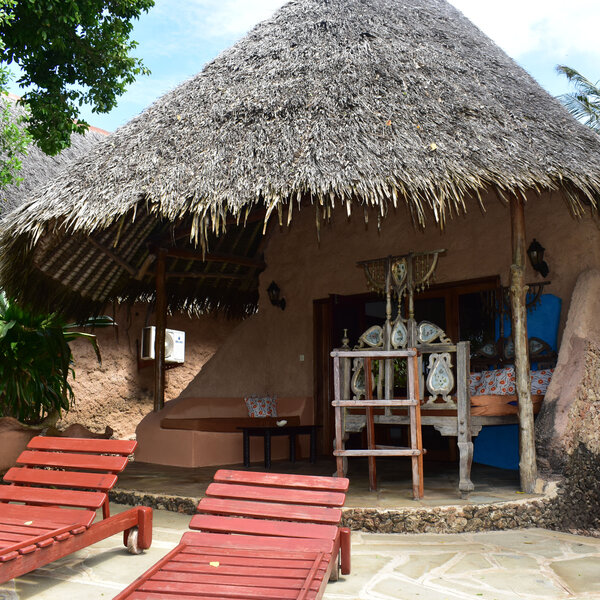
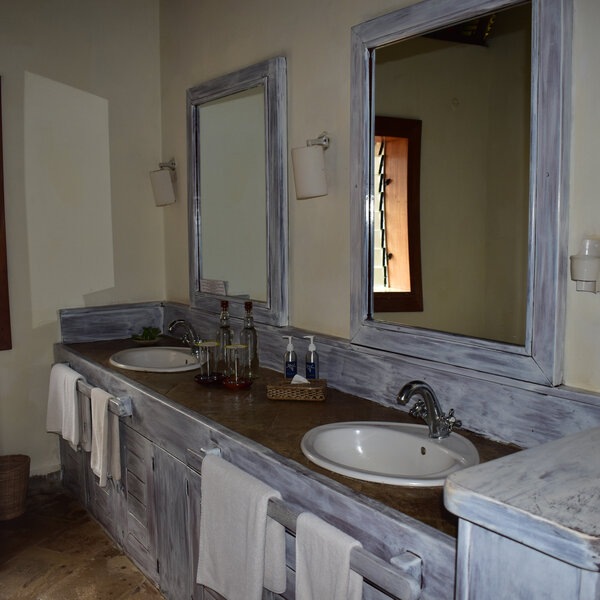
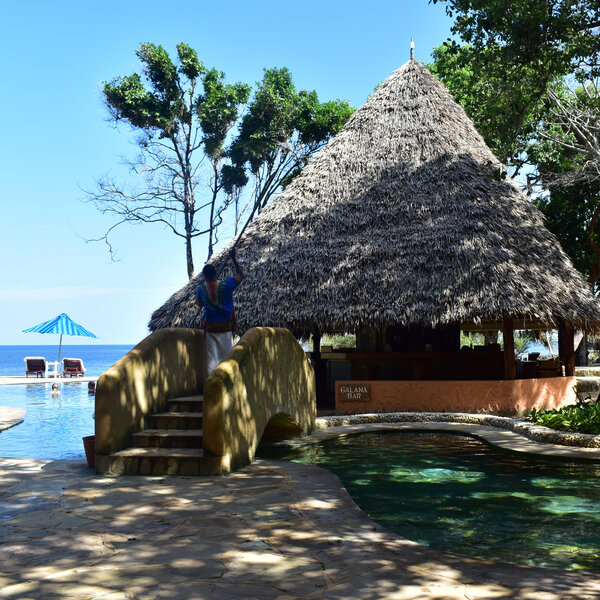
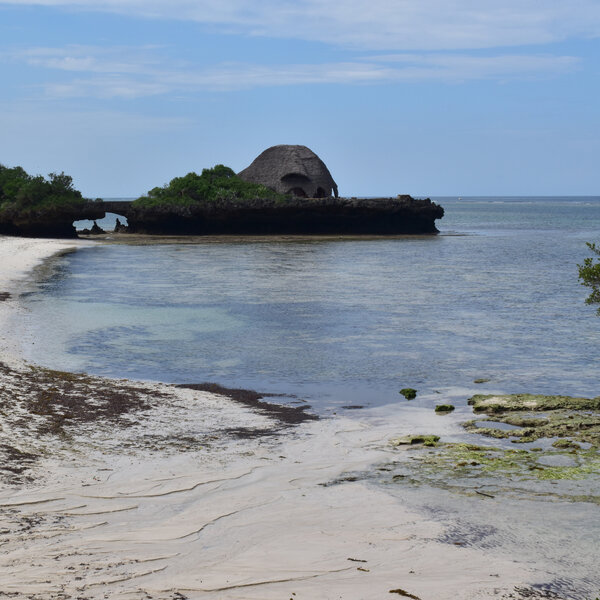
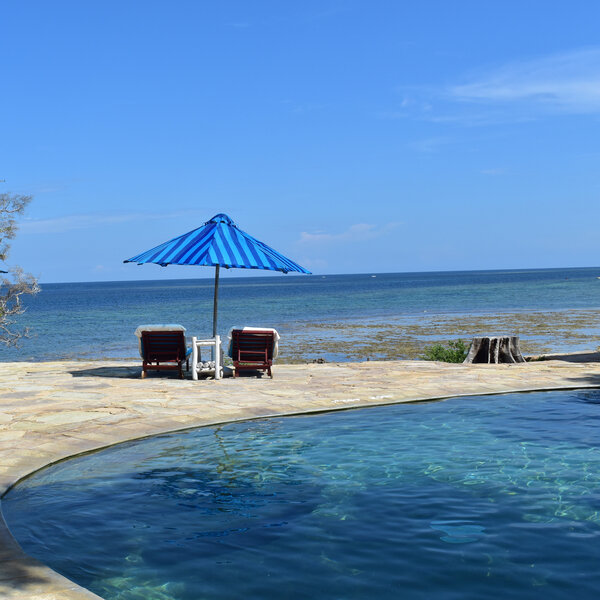
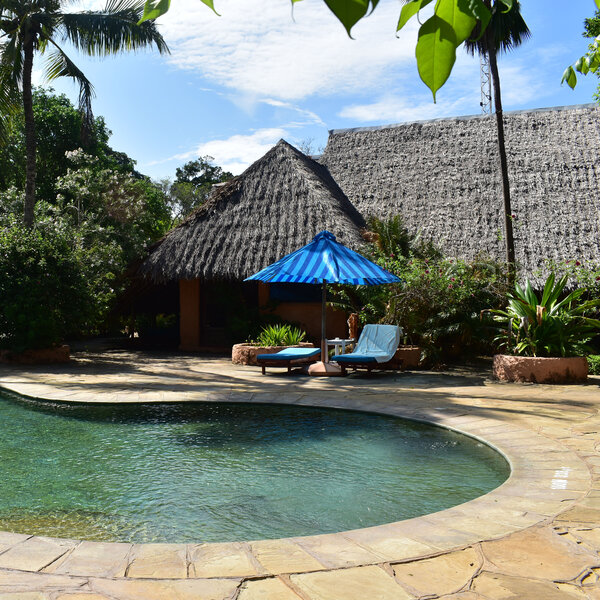
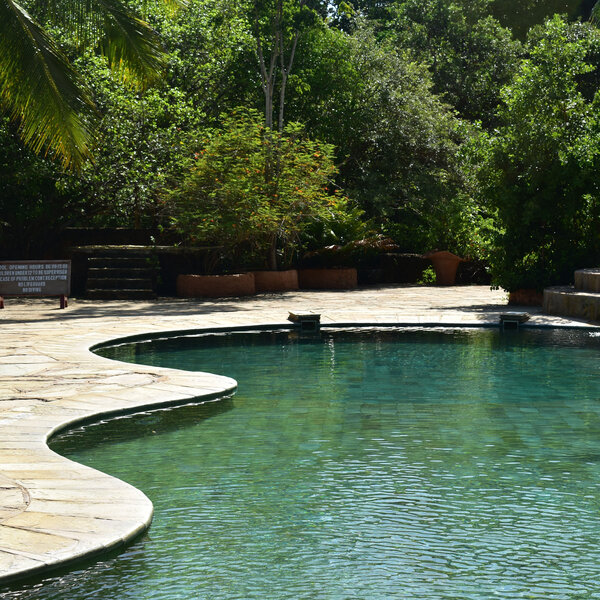
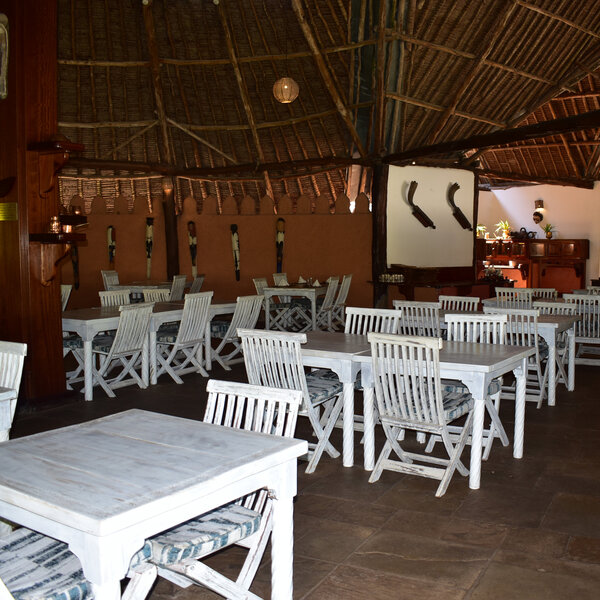
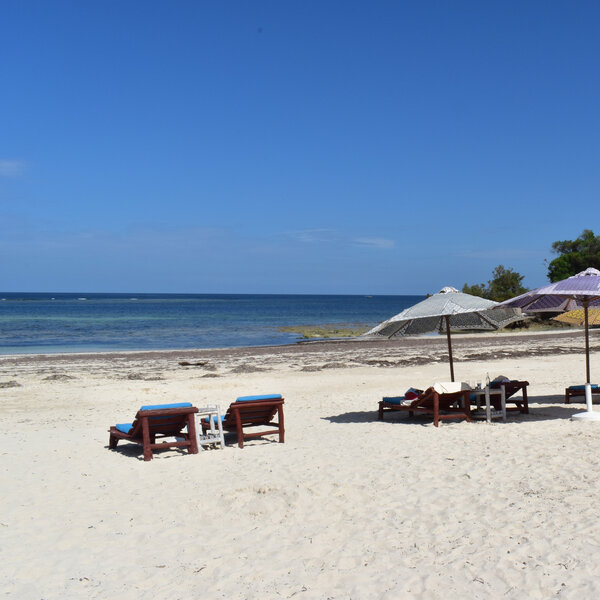
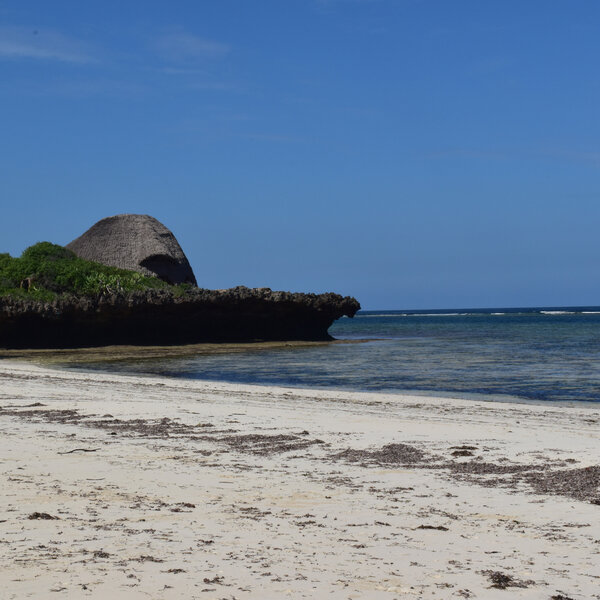
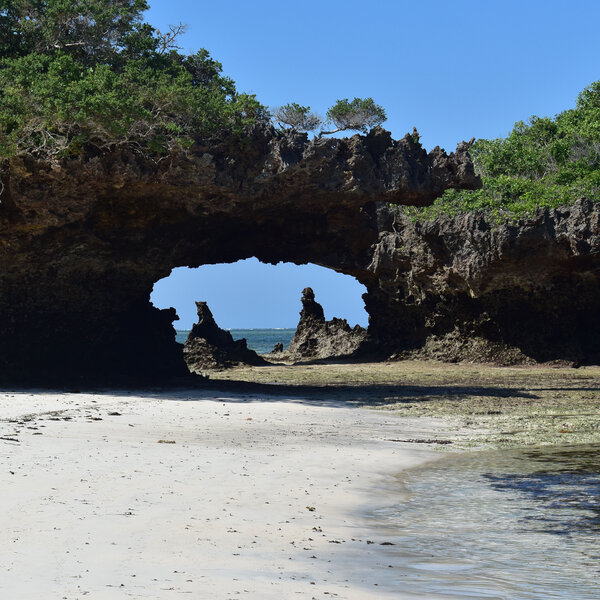
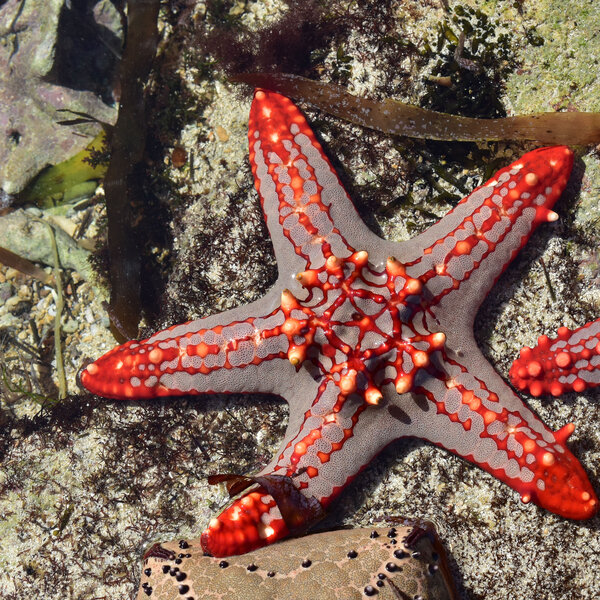
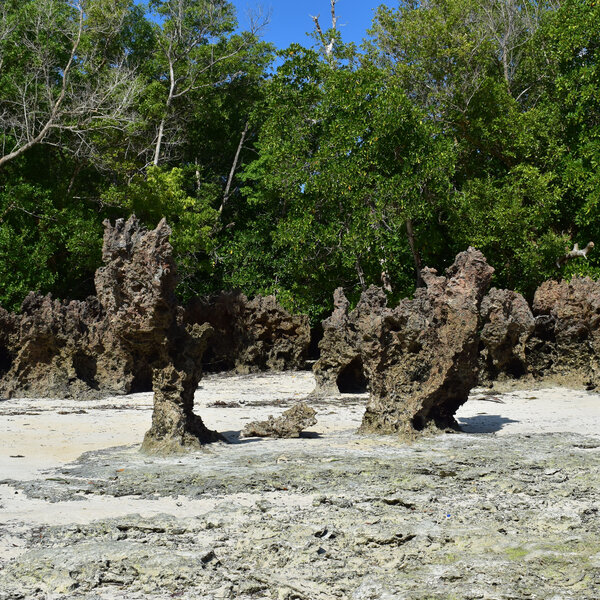
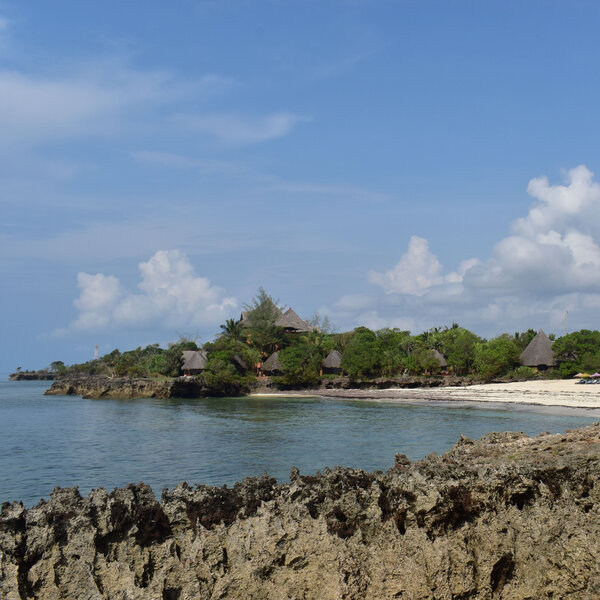
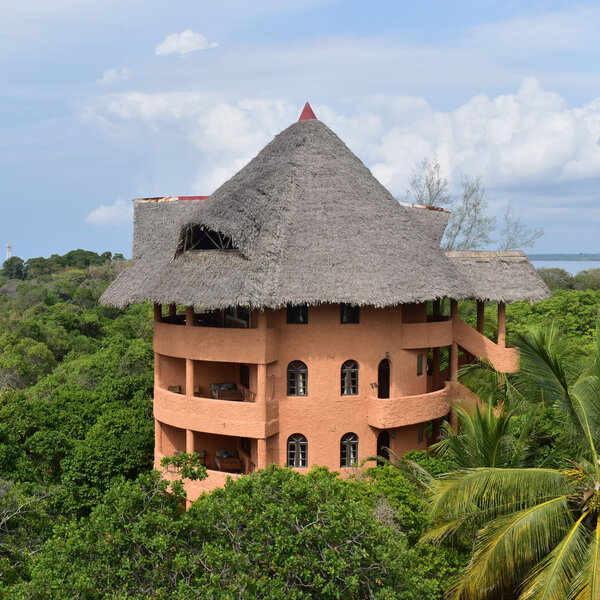

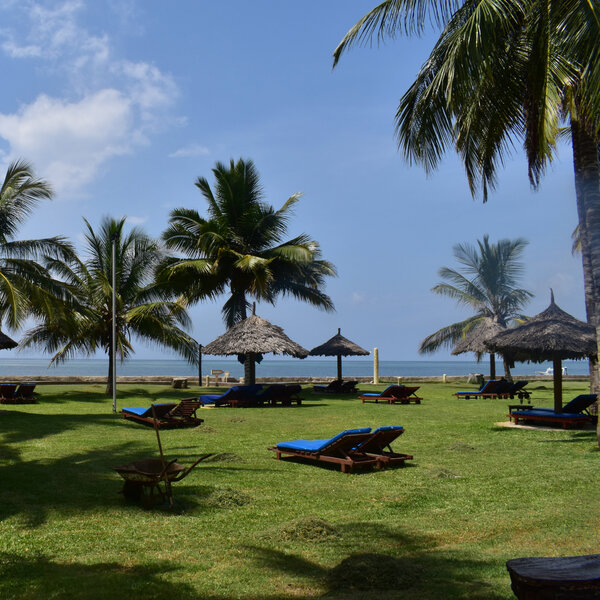
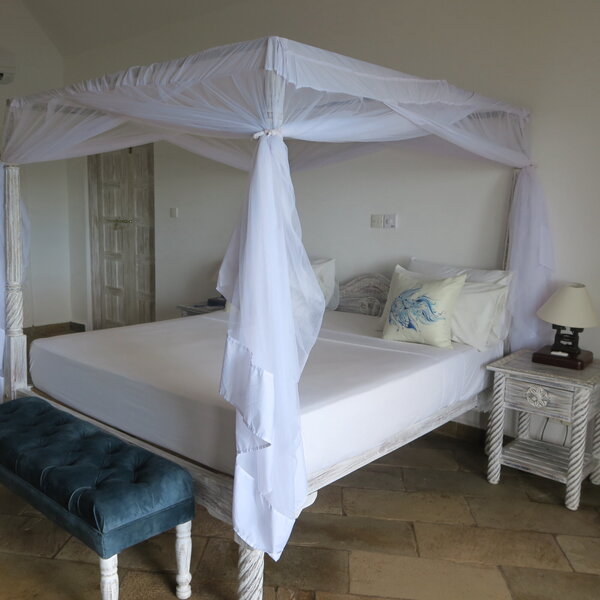
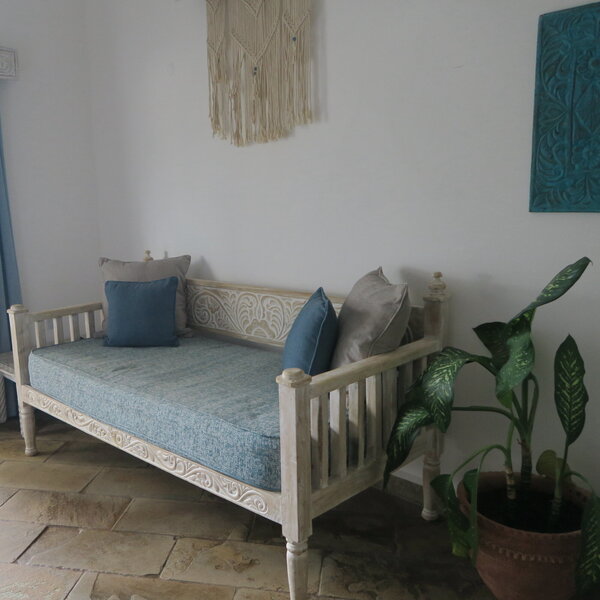

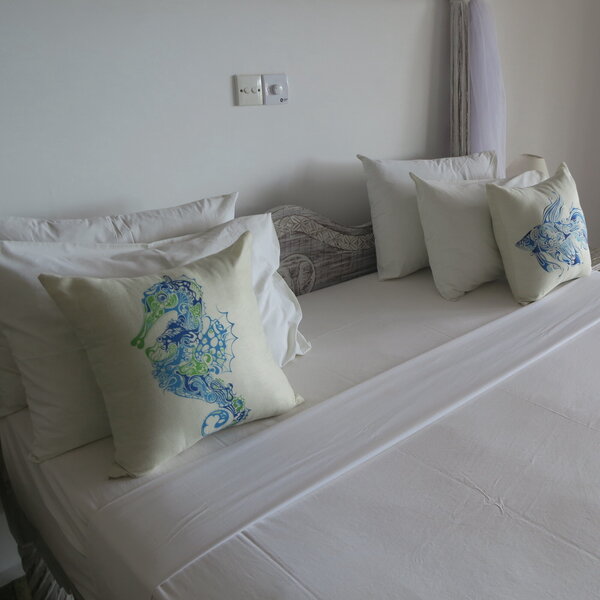
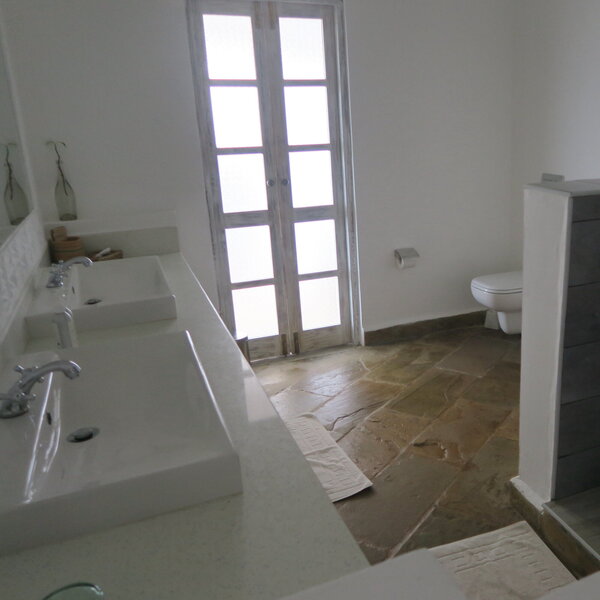

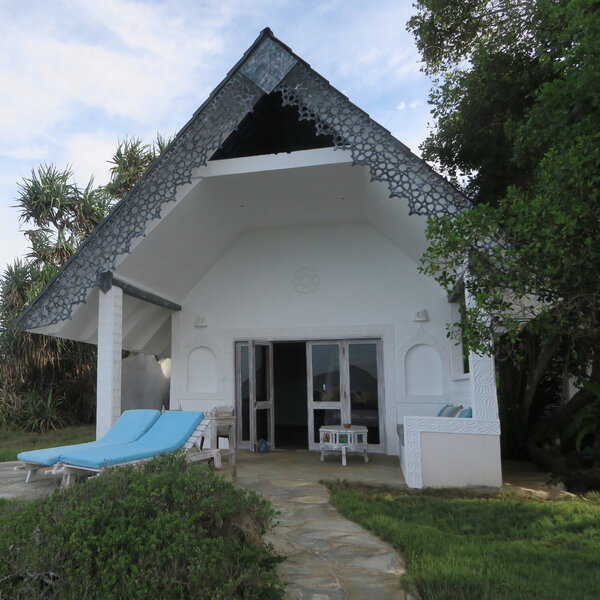
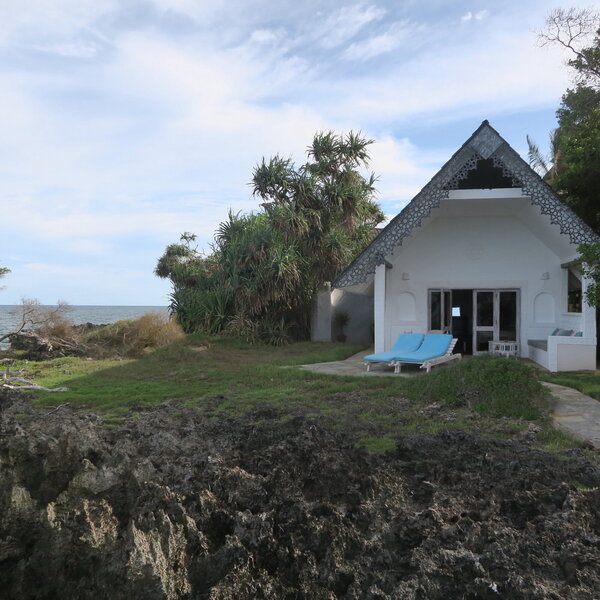
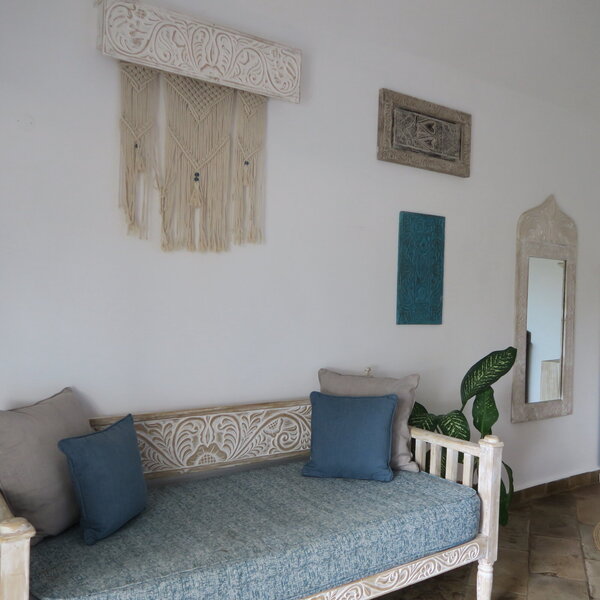
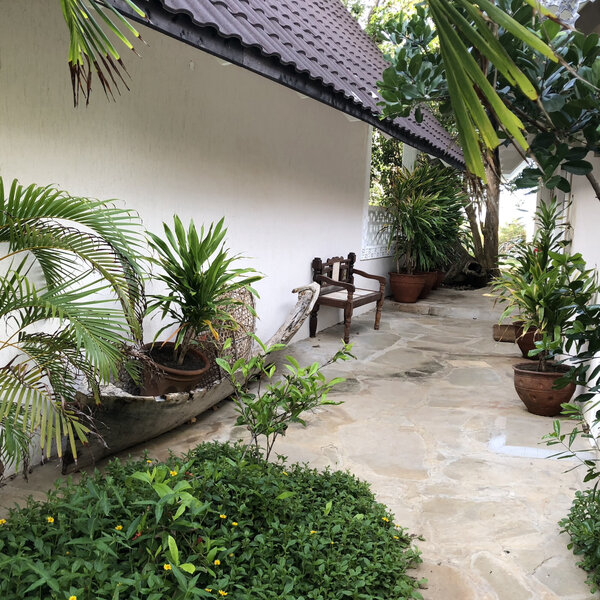
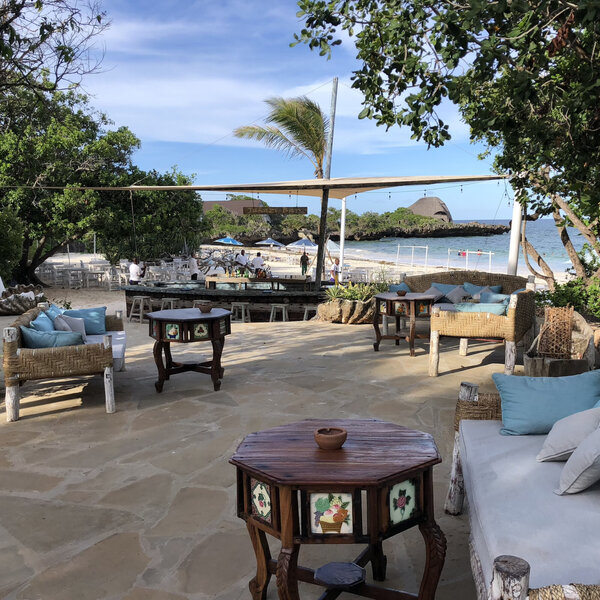
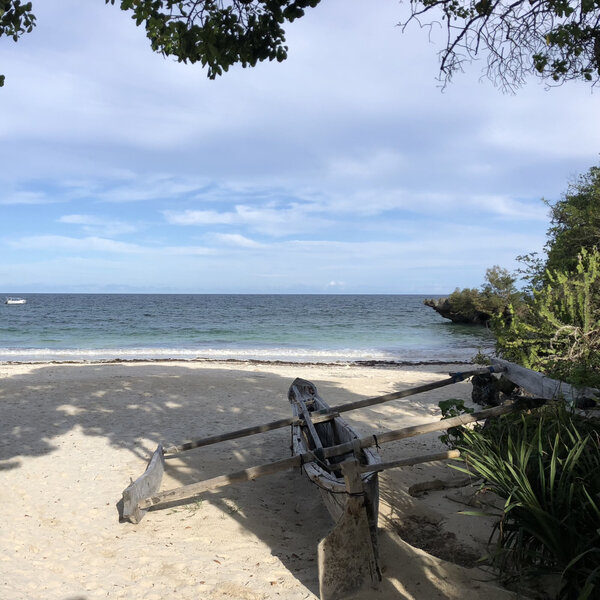
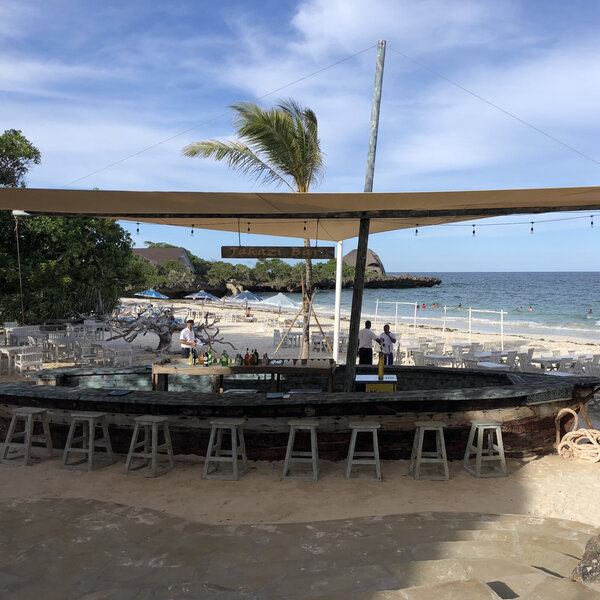
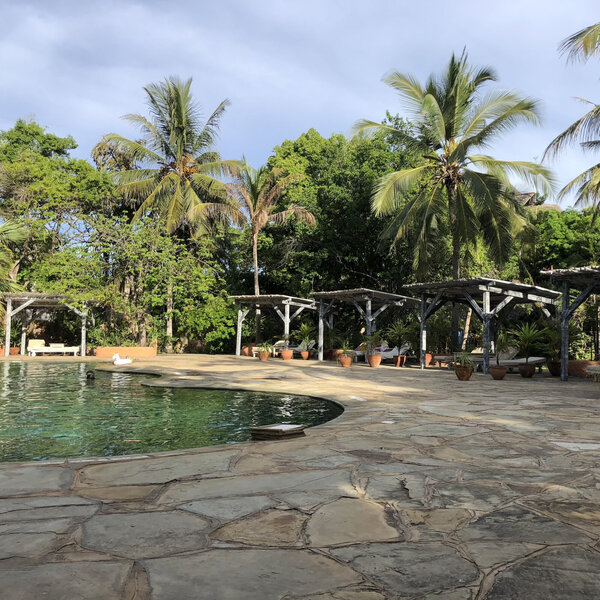
Expert Africa's gallery
When we travel we take lots of photos ourselves to give you a real and un-edited view of the holidays. See our 73 pictures of The Sands at Chale Island to get the candid view.
View galleryThe Sands at Chale Island: Our full report
The Sands at Chale Island is a stylish and private beach resort located on the 900m by 300m Chale Island.
Situated just a stone's throw off Kenya's mainland, the resort occupies the north of the island, while the southern part is covered by indigenous forest and is actually a Mijikenda kaya – one of this people's ancestral village sites that are scattered along the Kenyan coast. The Sands at Chale has been designed to blend in perfectly with the island's natural environment and the lodge emphasises low-impact, sustainable tourism.
The Sands at Chale has 60 rooms with six different room types:
The lodge has three swimming pools: the main pool by reception; a second pool with a pool bar, near the standard rooms; and a third, saltwater pool on the other side of the island next to the spa. The Maisha Poa spa and wellness centre has nine open-air treatment rooms and the fitness room is equipped with a range of cardio machines and weights.
The focal point of Chale island is the sweeping white sand beach. This is protected by a coral reef, usually with a very clear sea, although it is not uncommon to see small areas of seaweed gathering on sections of the beach. The location is stunning, and being an island the beach remains comparatively quiet and usually free of beach boys. You can easily walk around the coastline and explore the rock pools and sheltered bays of Chale Island by yourself, or you can chat to a member of staff and they will be able to arrange a guided tour. We were told that between January and March turtles frequently visit the island to lay their eggs in hidden coves.
The hotel's two restaurants serve Kenyan, Italian and Asian dishes. The main restaurant serves a buffet, with a wide range of dishes and a fresh pasta station, while a second smaller restaurant does à la carte meals. Because of the remote location many guests choose to stay on a full board basis. The main bar, nestled between the reception and main restaurant, serves a range of hot and cold drinks.
If you're looking for some alternatives to idle relaxation, there are plenty of activities on offer: beach or boat snorkelling, kayaking, game fishing and glass bottom boat or catamaran sailing trips. The on-site PADI and SSI dive centre, The Crab, takes guests to exceptional dive sites. And you can easily arrange excursions to the shops and restaurants at Diani Beach, the Kisite-Mpunguti Marine National Park (a little further south) and to a local fishing village.
Activities
Birdwatching
Boat trip
Scuba-diving
Snorkelling
Watersports
Families & children
- Attitude towards children
- The Sands at Chale Island is a great choice for a family holiday and children of all ages are accepted.
- Property’s age restrictions
- None
- Special activities & services
- Babysitting can be arranged if required, however this will be hotel staff rather than professionally trained babysitters.
- Equipment
- Basic equipment such as baby cots and high chairs available.
- Generally recommended for children
- Children are likely to enjoy the three swimming pools and large beach, although adult supervision is required as there are no lifeguards.
Food & drink
- Usual board basis
- Half Board
- Food quality
- The Sands at Chale Island is not fine dining, although we found it to be tasty and plentiful. Breakfast is a buffet, with a selection of fresh fruit, cereals and pastries, in addition to hot items including beans and roast potatoes. There is an egg station with eggs, sausages and bacon cooked to order. Lunch is à la carte, served at one of the two restaurants or possibly the pool bar. Dinner is usually a buffet in the main dining area, typically starting with a soup or salad and followed by an eclectic mix of Kenyan and international dishes. When we last stayed in 2022 these included traditional East African dishes such as ugali (maize porridge), spiced vegetable stew and chapatti, and octopus curry. We really liked the pasta station, where we enjoyed freshly made gnocchi served with sage butter. If you have room, you can finish with a range of desserts and fresh fruit.
- Dining style
- Individual Tables
- Dining locations
- Indoor and Outdoor Dining
- Drinks included
- Drinks are extra, although these are reasonably priced, around $3 for a soft drink and around $5-6 for a beer or glass of wine.
Getting there
- Location
- Kenya Coast, Kenya
- Ideal length of stay
- Spend at least 3-4 nights here to relax either before or after your safari.
- Directions
- The Sands at Chale is around a 40-minute drive from Diani Airport. At high tide you access the island by boat, whereas at low tide you will be transferred via a tractor.
- Accessible by
- Fly-and-Transfer
Communications
- Power supply notes
- There are plans to connect Chale Island with mains power.
- Communications
- WiFi is available throughout.
- Water supply
- Borehole
- Water supply notes
- The plumbed water is slightly brackish, which is noticeable when taking a shower. Filtered drinking water is provided in all the rooms.
Health & safety
- Malarial protection recommended
- Yes
- Medical care
- Staff are first-aid-trained and there are medical supplies on site. Diani Beach hospital is around 30-40 minutes by road.
- Dangerous animals
- Low Risk
- Security measures
- There is discreet security around the island 24 hours a day.
- Fire safety
- There are fire extinguishers and water hoses located near the rooms, however our health inspection service judges these are not adequate on the 1st-3rd floor standard rooms.
Useful info
- Disabled access
- On Request
- Laundry facilities
- Laundry is available at extra cost.
- Money
- There are electronic safes in all rooms.
- Accepted payment on location
- The Sands at Chale Island accepts US Dollars, Euros and limited GB pounds. All major credit and debit cards are accepted, including AMEX.
Plan and book your trip with Expert Africa
All of our trips are tailor-made, so we'll always adapt them to suit you. Talk to an Expert and let us plan and arrange your perfect trip.

Talk to an Expert
Call or email us now! We’ll match you with the Specialist in our team who is best suited to help you. Then together we can start planning your trip.

Set up your itinerary
Based on our experience and your ideas, your specialist will create a detailed, costed itinerary. We’ll refine it together, until we have a trip that you’re perfectly happy with.

Prepare for your trip
The same Specialist will make the seamless arrangements for your trip, send you detailed travel documents, and be available to answer any questions before you depart.

Travel with peace of mind
After you set off, you’ll be cared for by our partners in Africa, most of whom have worked with Expert Africa for decades. And if you ever need us urgently, we’re available 24/7.

When you return
We love to learn about your trip, and so will always be grateful if you’ve the time to give feedback to your Specialist when you return.
The Sands at Chale Island's location
Look closer at the environment and surroundings of The Sands at Chale Island.
Other lodges in Kenya Coast
Alternative places to stay in this same area.
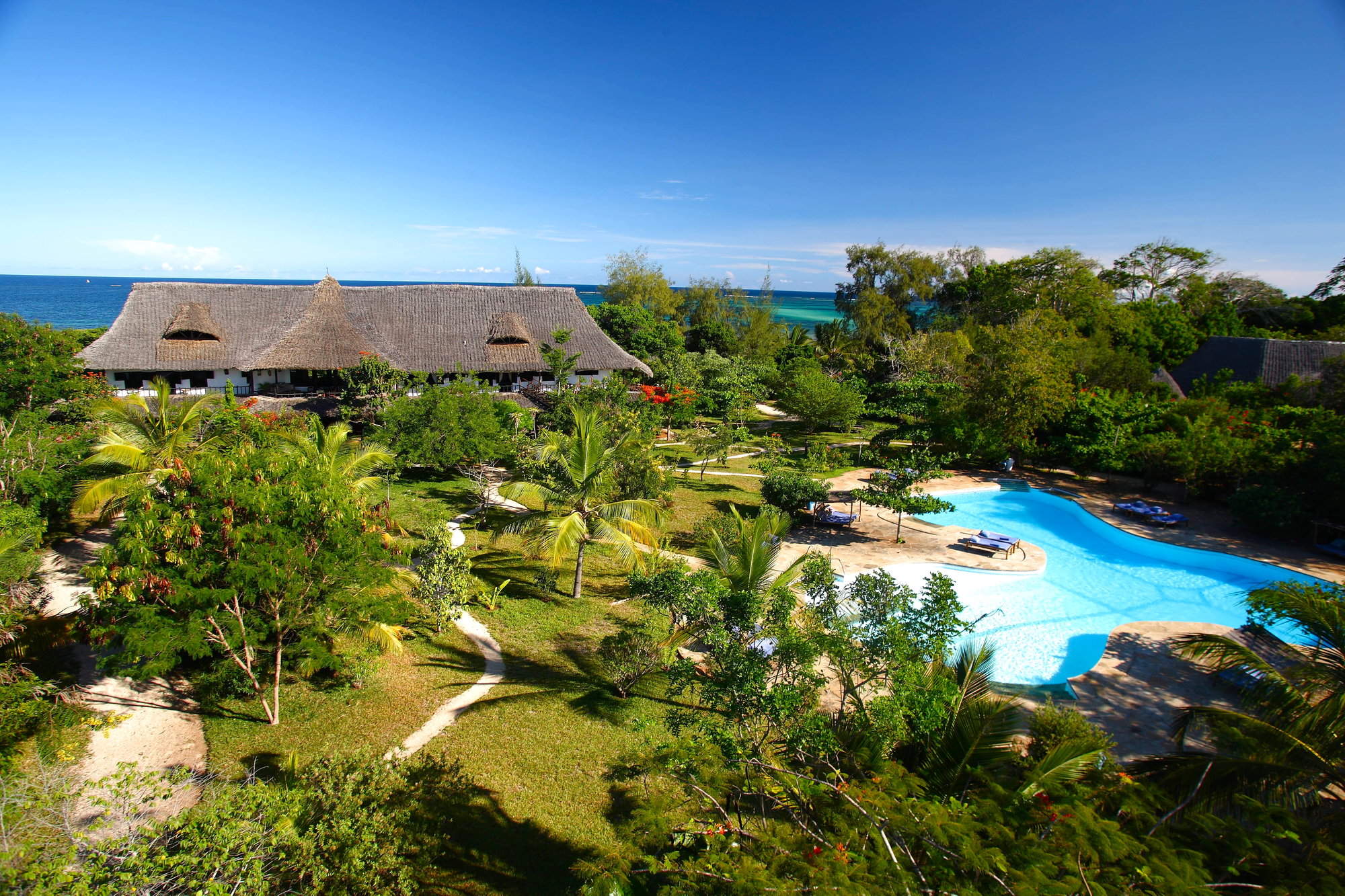
Kinondo Kwetu
Kinondo Kwetu is a small, owner-run, all-inclusive boutique lodge of exceptional quality situated on a remote stretch of beach south of the busier Diani Beach area.
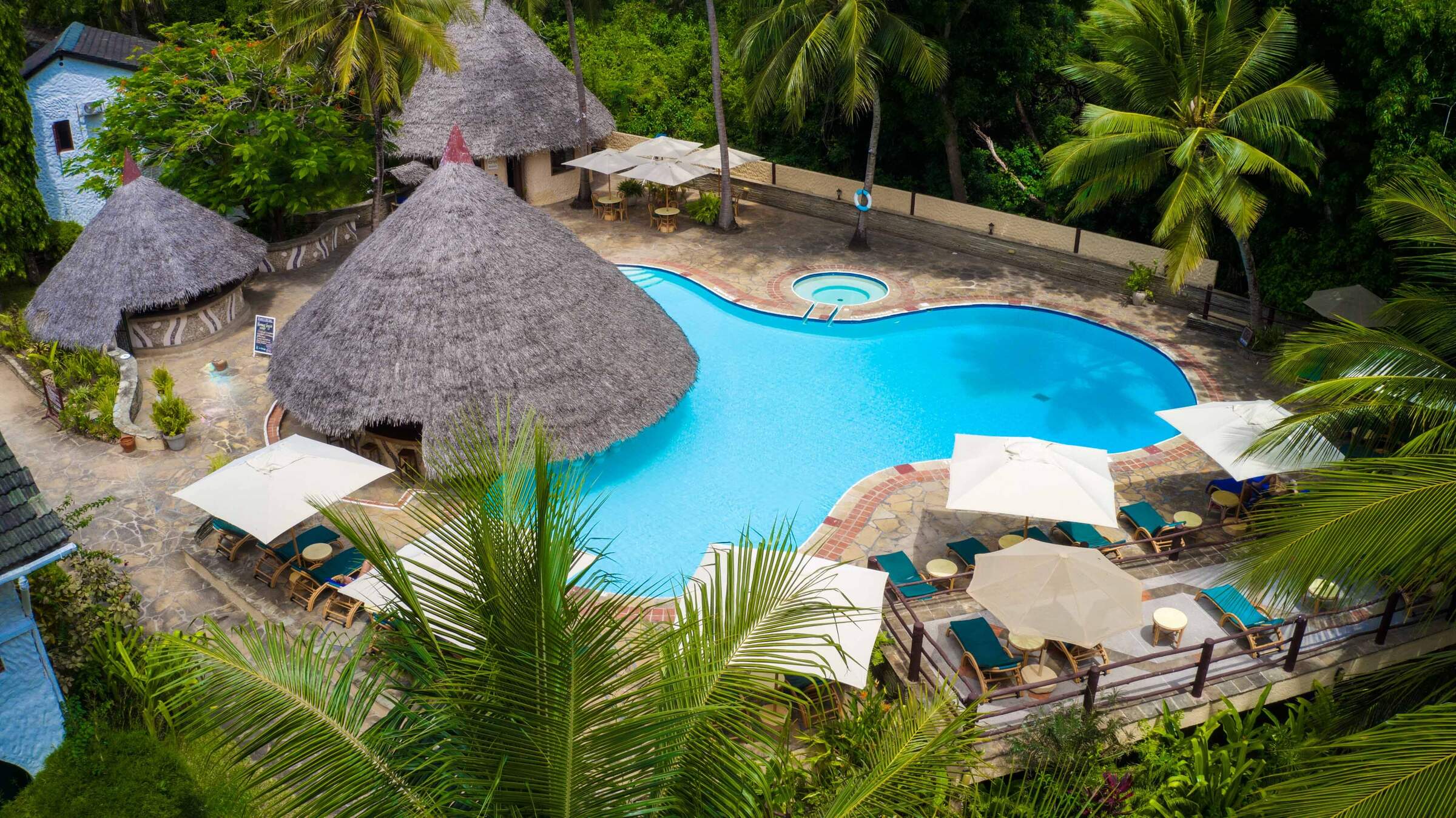
Pinewood Beach Resort
Pinewood Beach Resort is a relaxed resort-style hotel at the far south end of Diani Beach - an area known as Galu Beach.
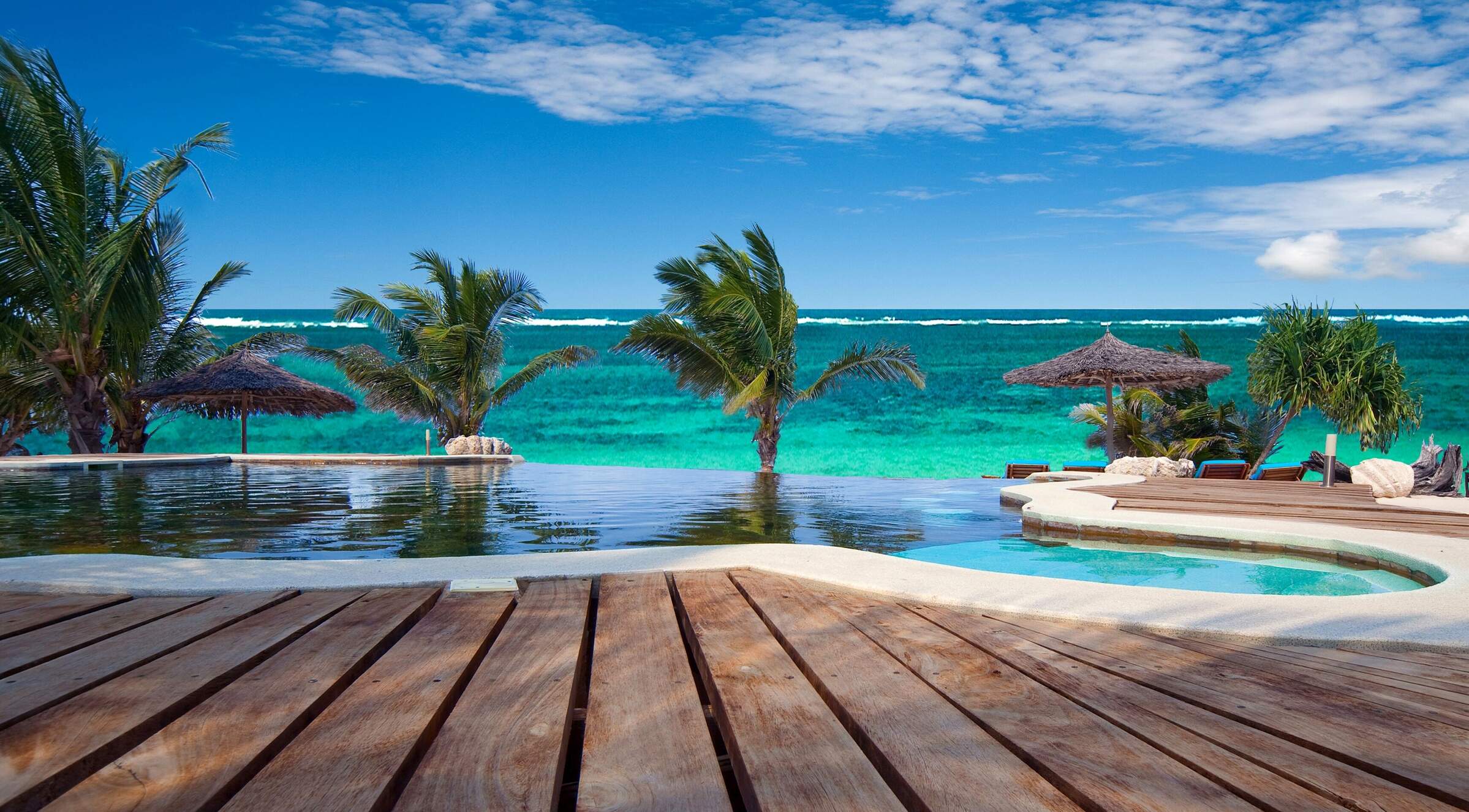
Water Lovers
Water Lovers is a popular, low-key beach hotel in a central location on Diani Beach on the south coast of Kenya.
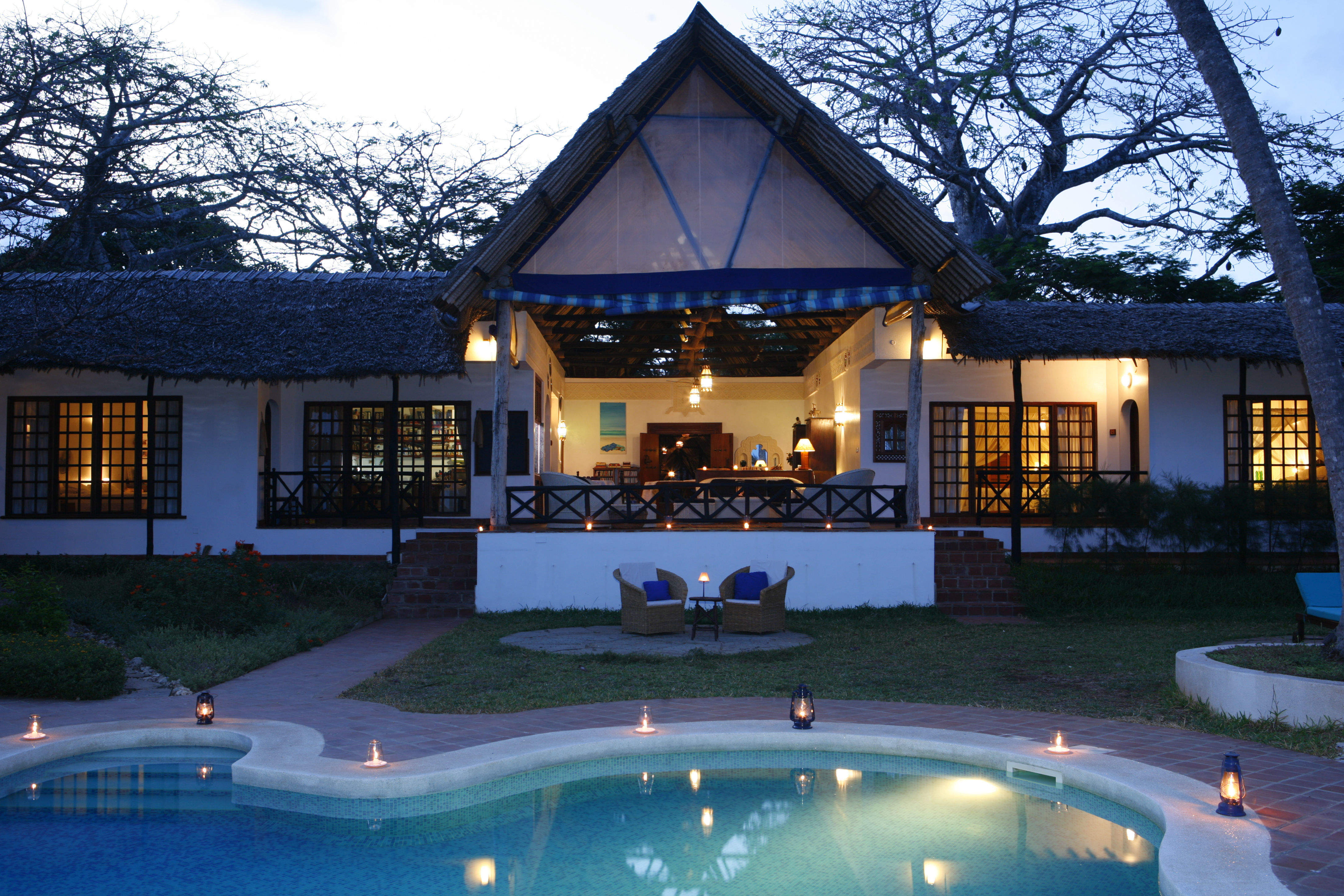
Asha Boutique Hotel
Diani Blue is a low-key but stylishly comfortable small guesthouse, with high levels of service, in a busy, central part of Diani Beach.
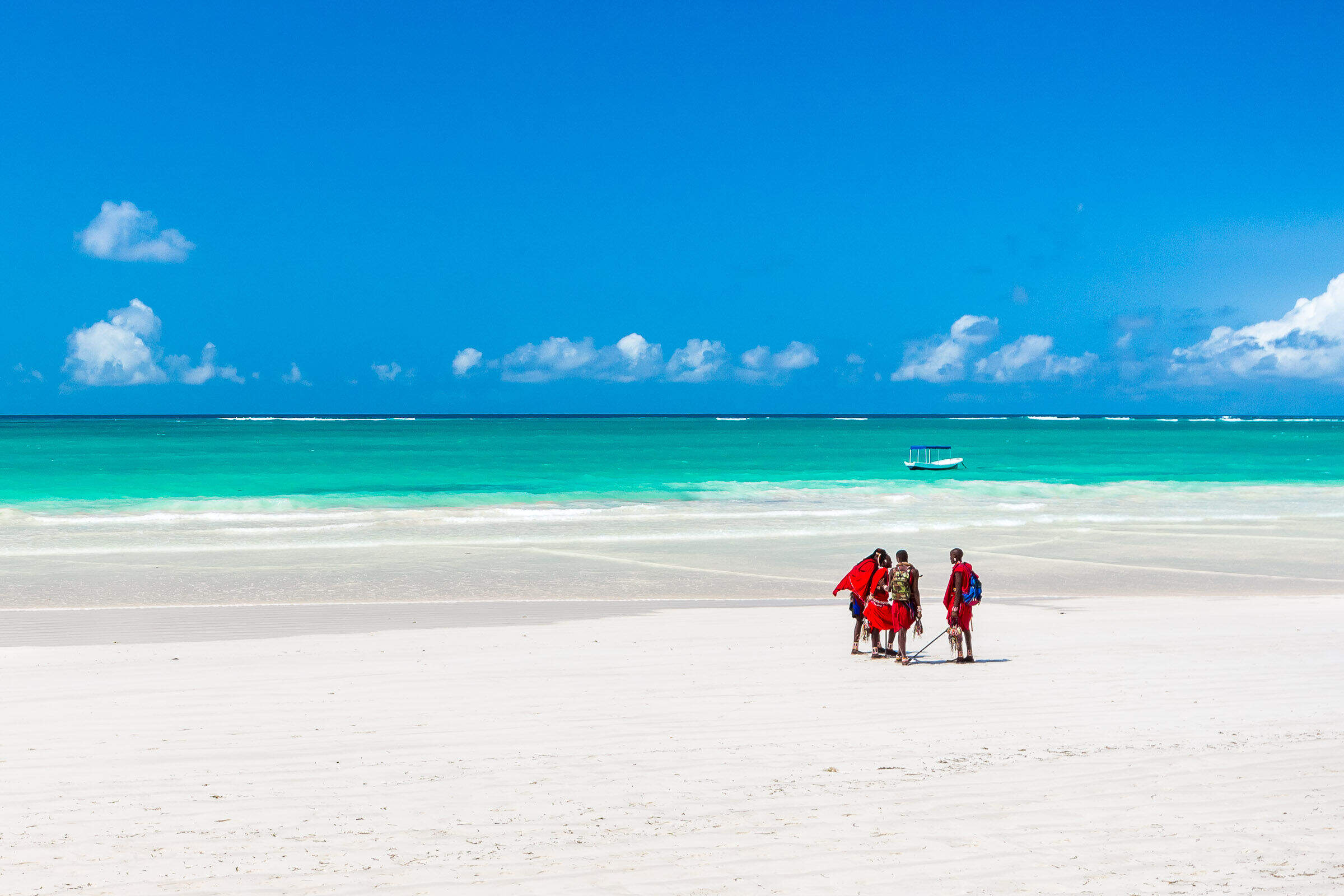
The Sands At Nomad
The Sands At Nomad is a good-value, laidback, family friendly resort with lots of Swahili character.
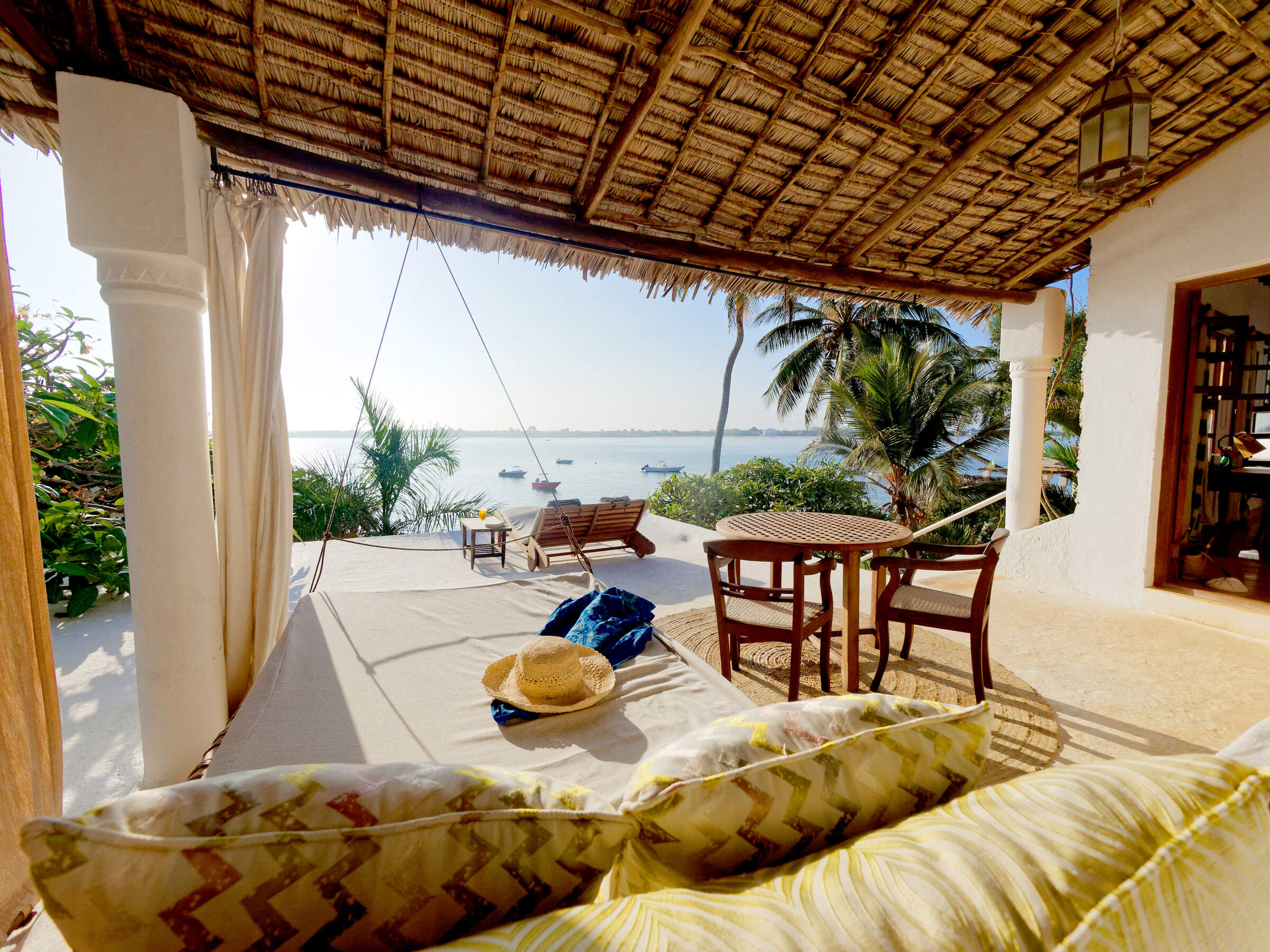
Peponi
Peponi is a long-established beach hotel, renowned for its good food, located in the village of Shela on the south side of Lamu island.
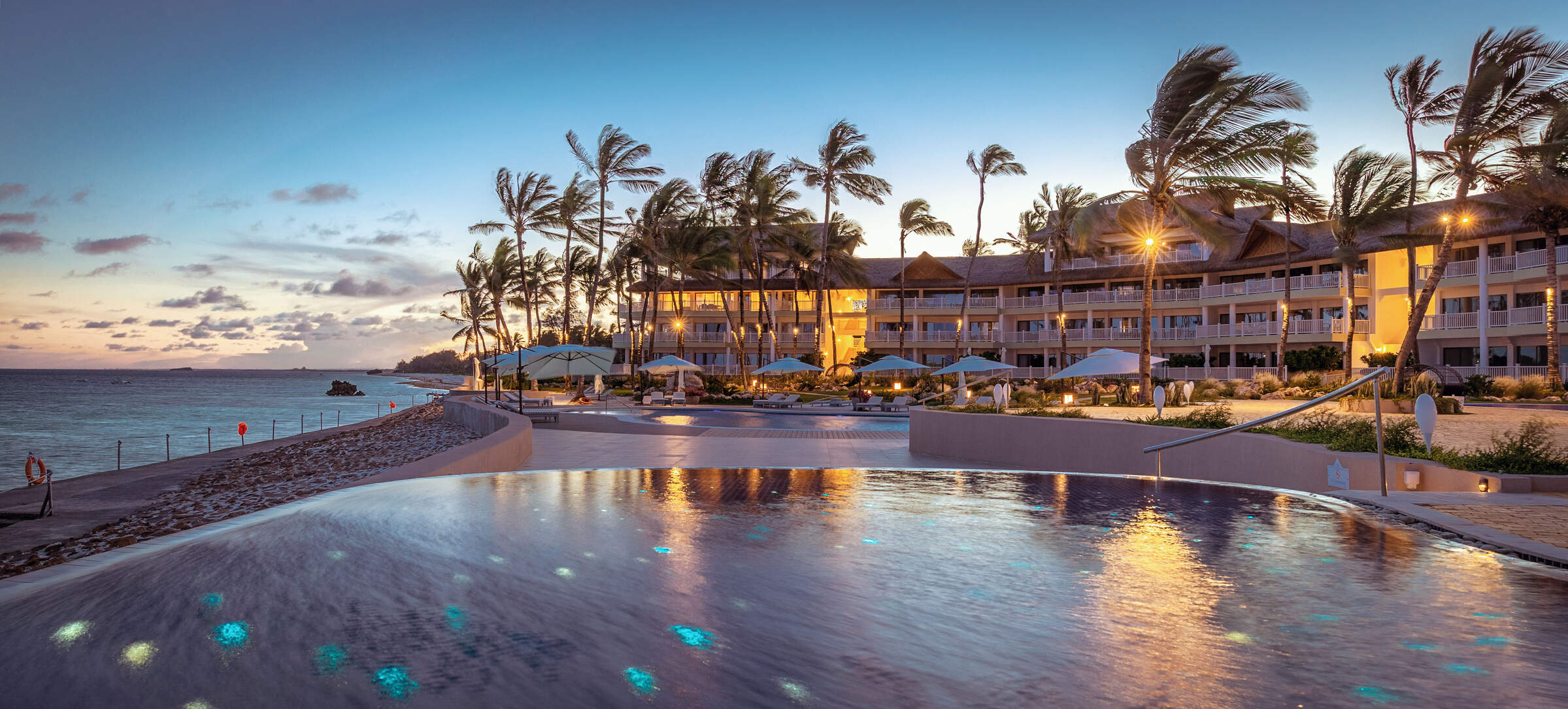
Hemingways Watamu
Long-established resort hotel with a strong British following and a good reputation for deep-sea fishing.
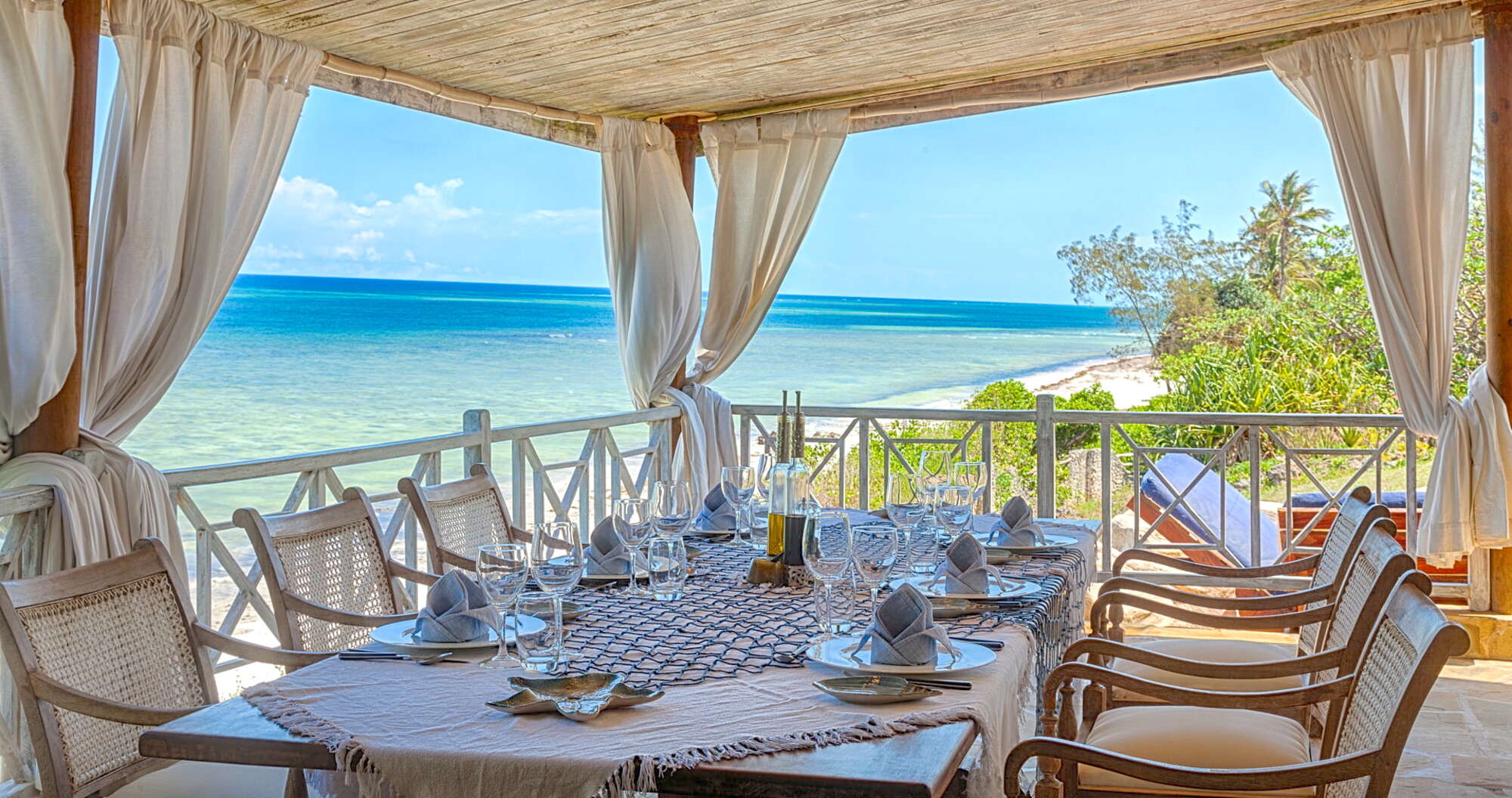
Alfajiri Villas
Alfajiri Villas is an exclusive, owner-run, hideaway property consisting of three unique villas in a central part of the north end of Diani Beach.
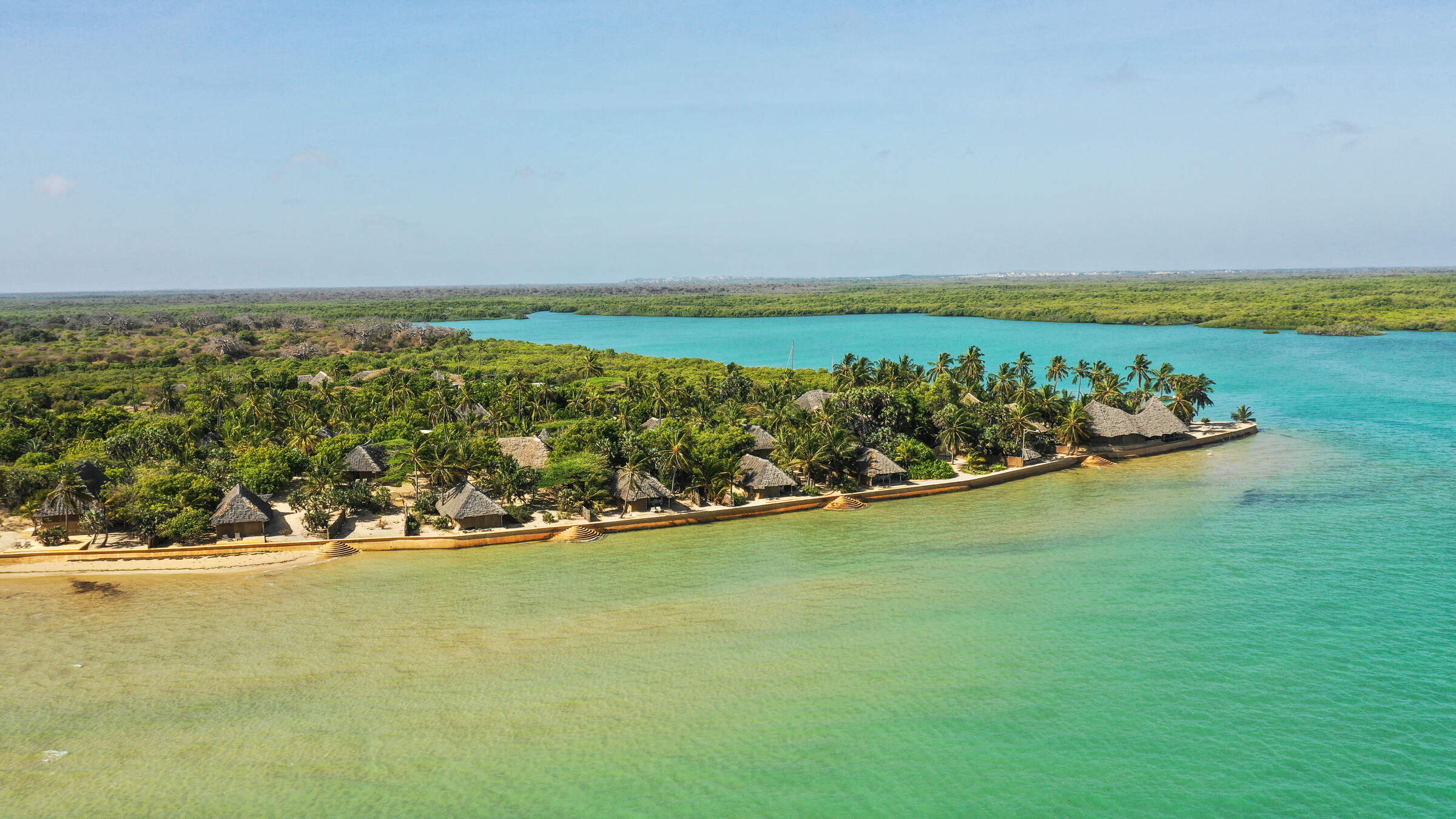
Manda Bay
Manda Bay is a luxury beach hideaway in a remote corner of an island in the Lamu archipelago, on Kenya's northern coast. It has a huge range of water sports on offer.
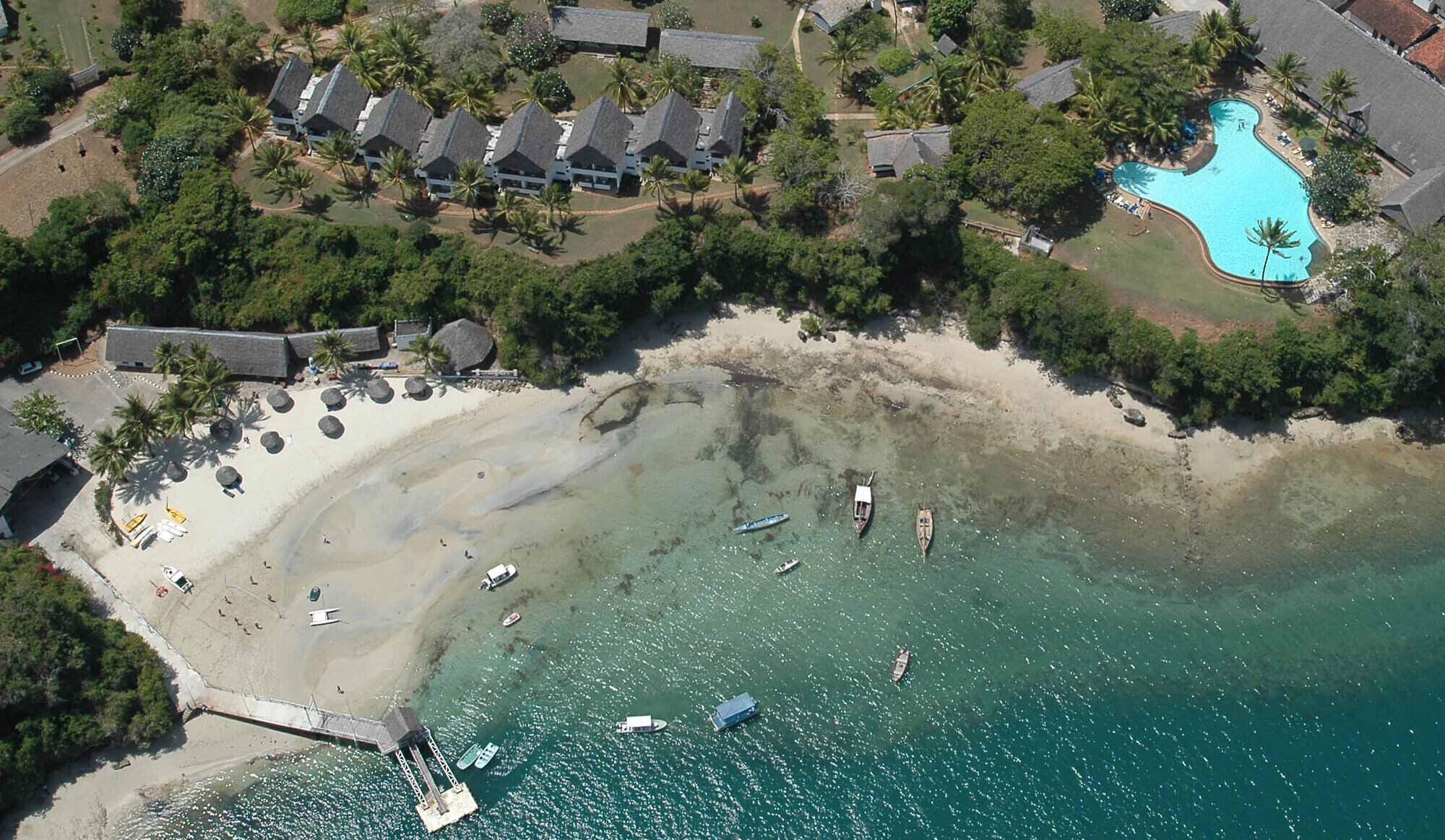
Mnarani Club
The Mnarari Club is located towards the seaward end of the beautiful Killifi Creek, and is an enduring favourite on the Kenya coast.
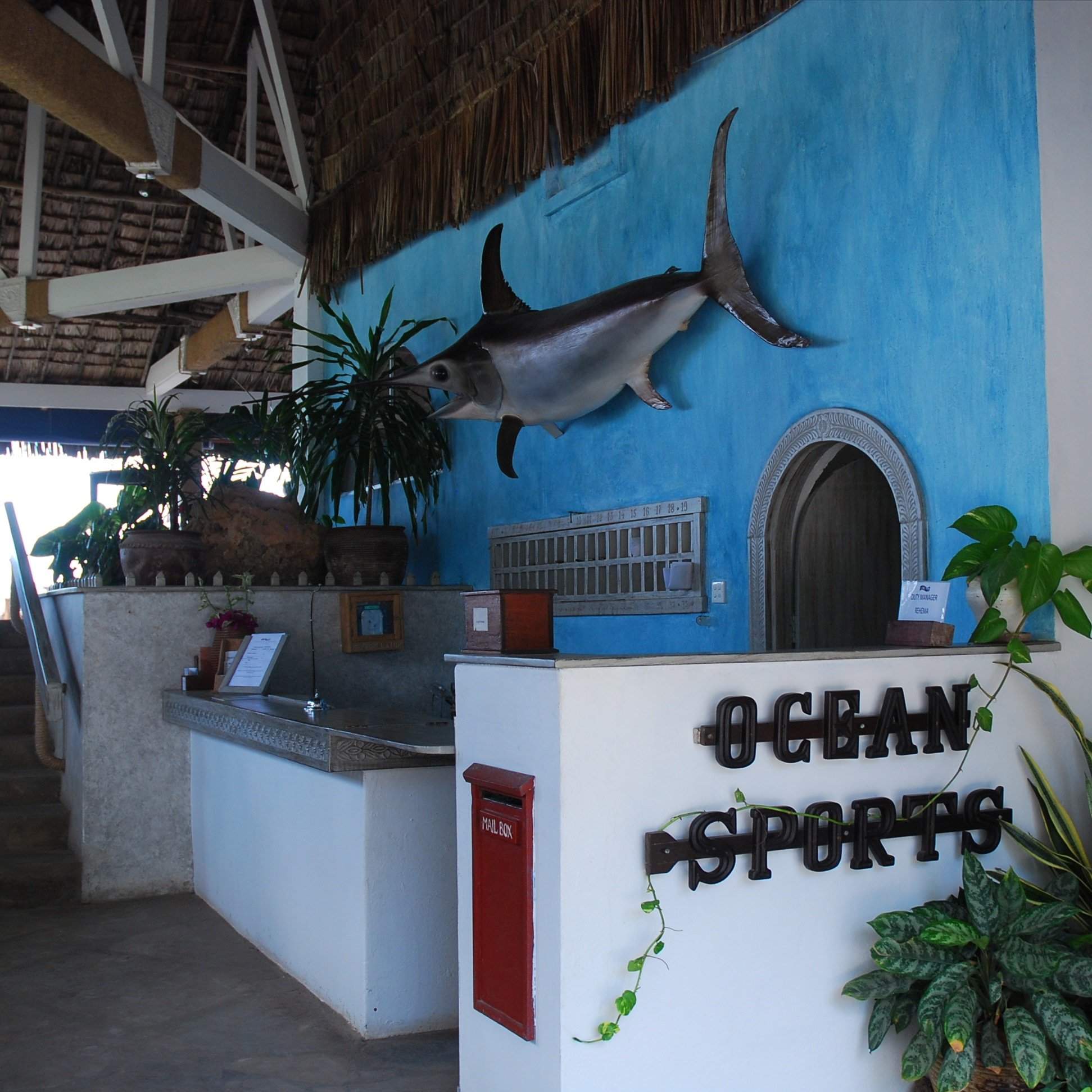
Ocean Sports
Ocean Sports is long-established and popular beach hotel right on one of Watamu's famous and beautiful bays.
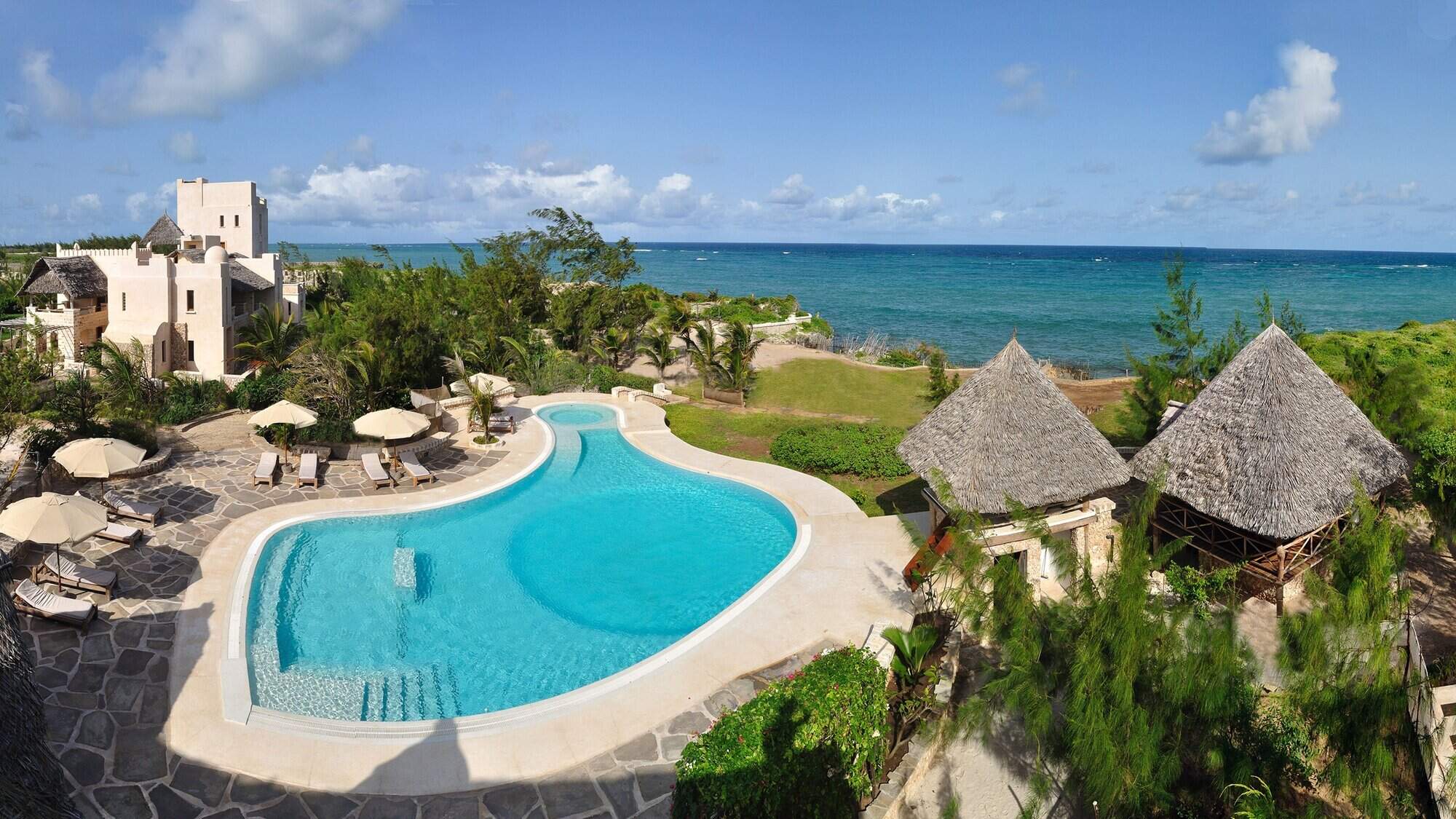
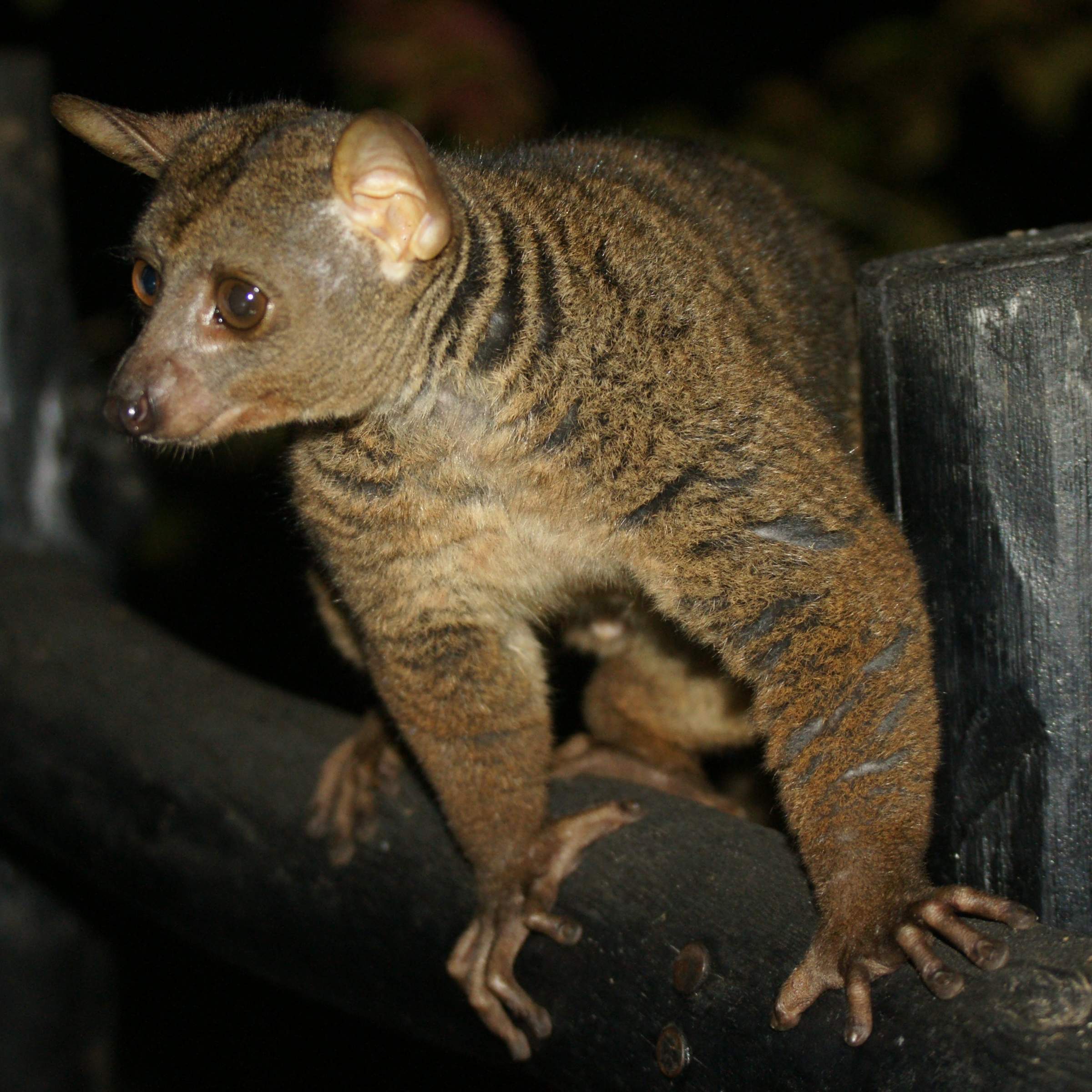
Shimba Lodge
Shimba Lodge is a picturesque tree-hotel overlooking a forest waterhole in Shimba Hills National Park, with an aerial walkway and abundant wildlife.
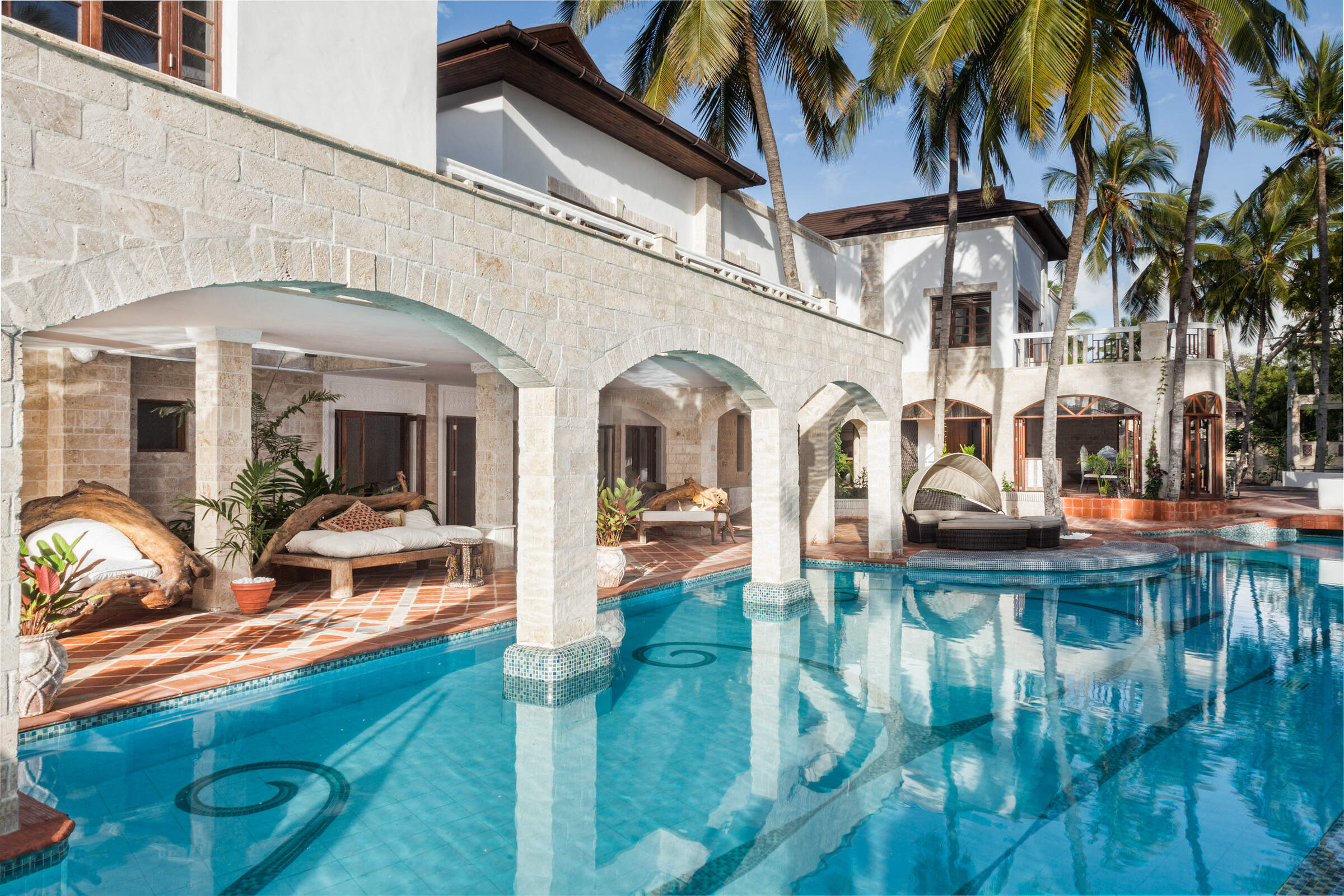
The Maji
The Maji is a small, well managed beach hotel on the northern stretch of Diani Beach in southern Kenya.
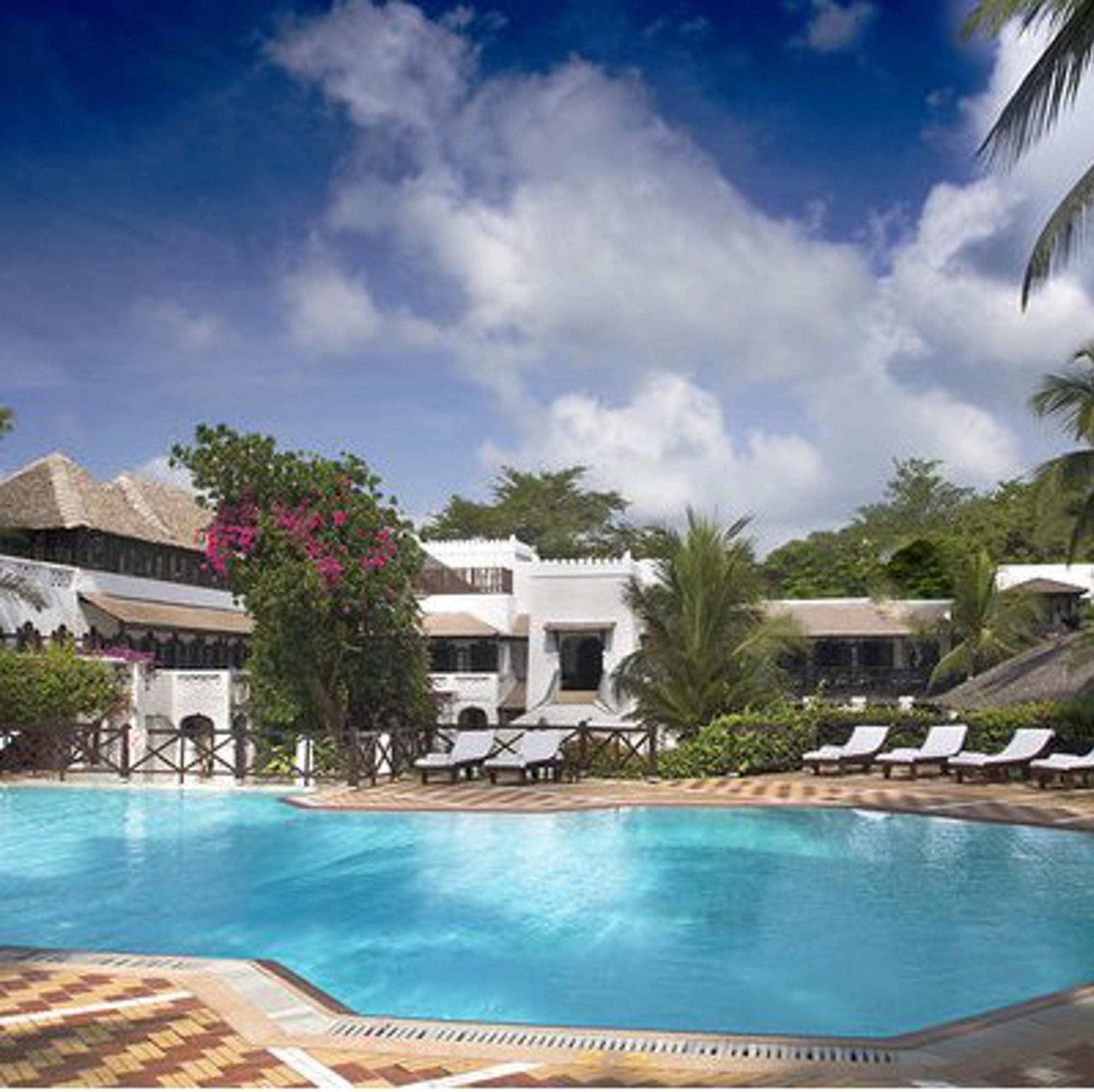
Serena Beach Resort
Serena Beach Resort is a large beach hotel on Shanzu Beach, north of Mombasa town, on Kenya's Indian Ocean coast.
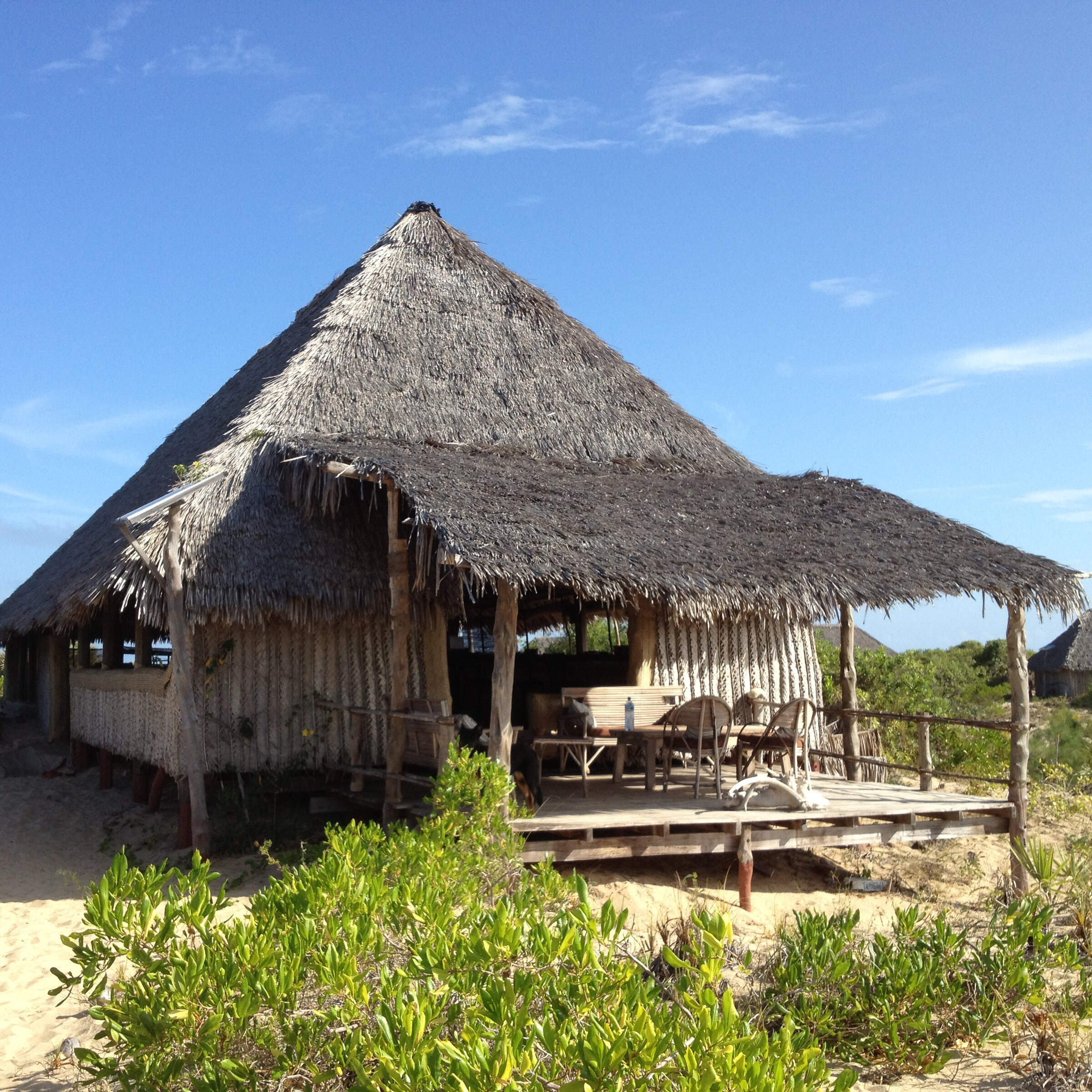
Kizingo
Kizingo is an owner-managed, rustic, barefoot beach lodge on the southwest tip of Lamu island.
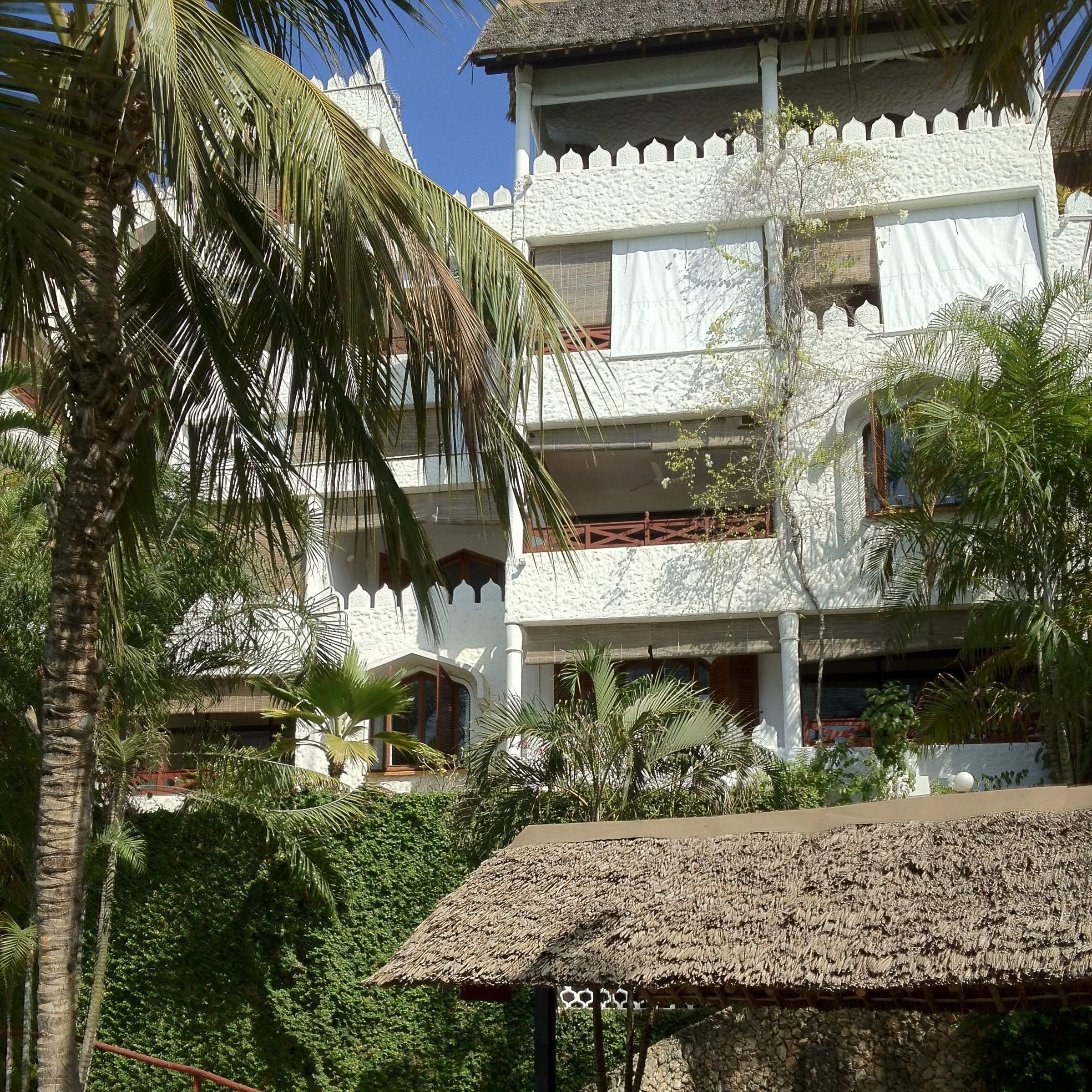
Tamarind Village
Tamaarind Village is a well managed apartment complex close to Mombasa city, with excellent restaurants, pools and visitor services.
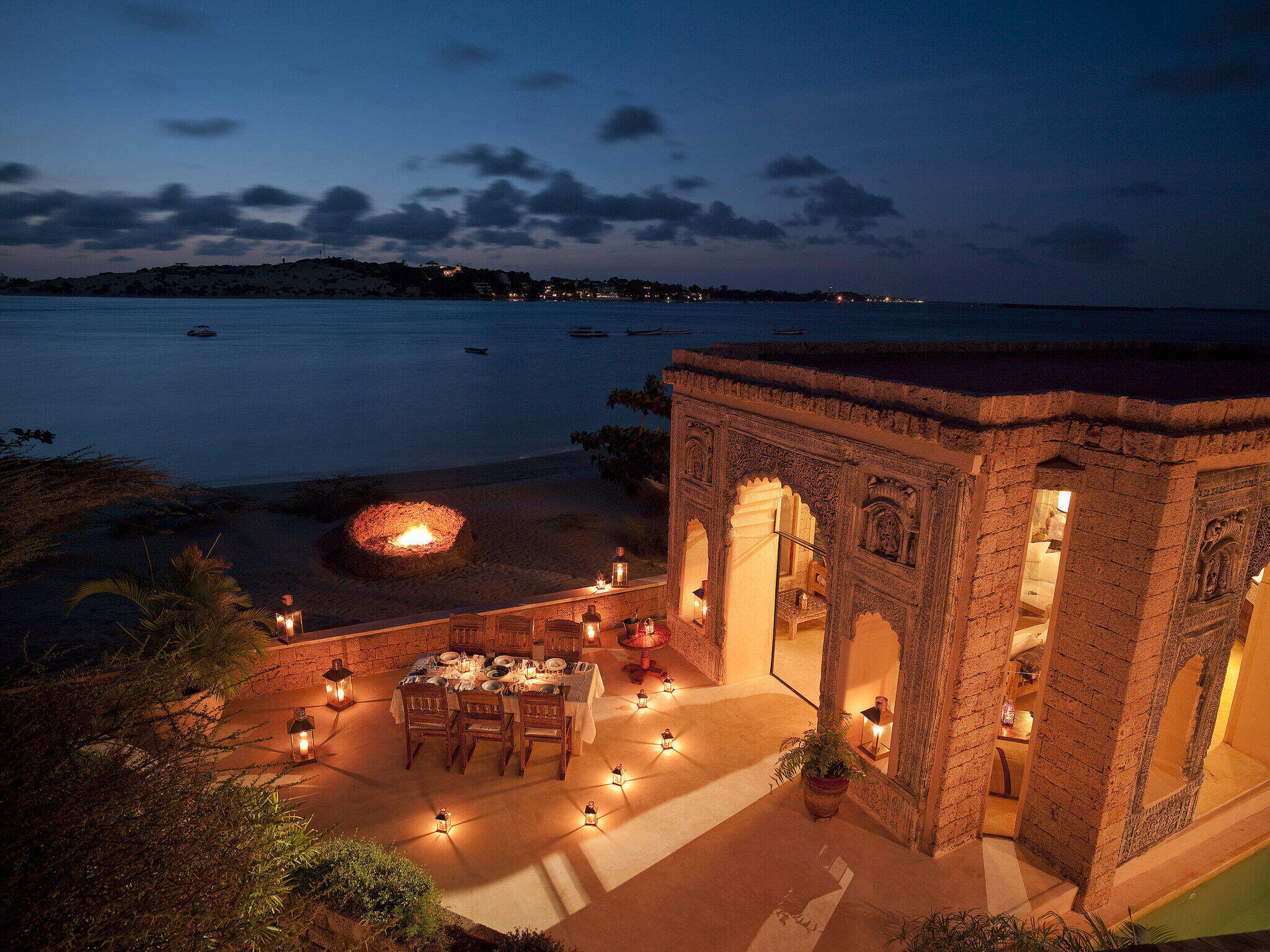
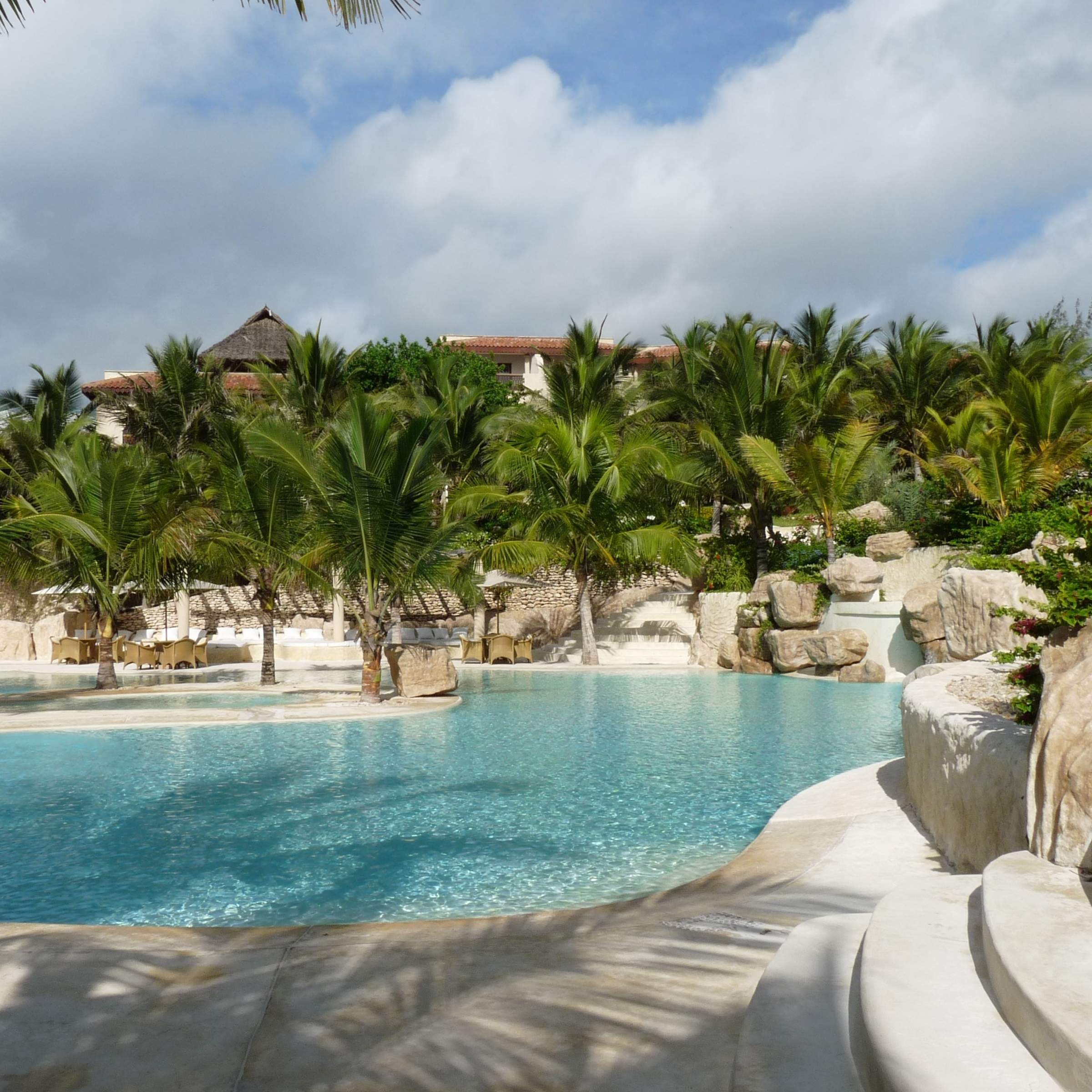
Swahili Beach
Swahili Beach is one of the biggest resort hotels on Diani Beach, with a spectacular lobby and cascading swimming pool.
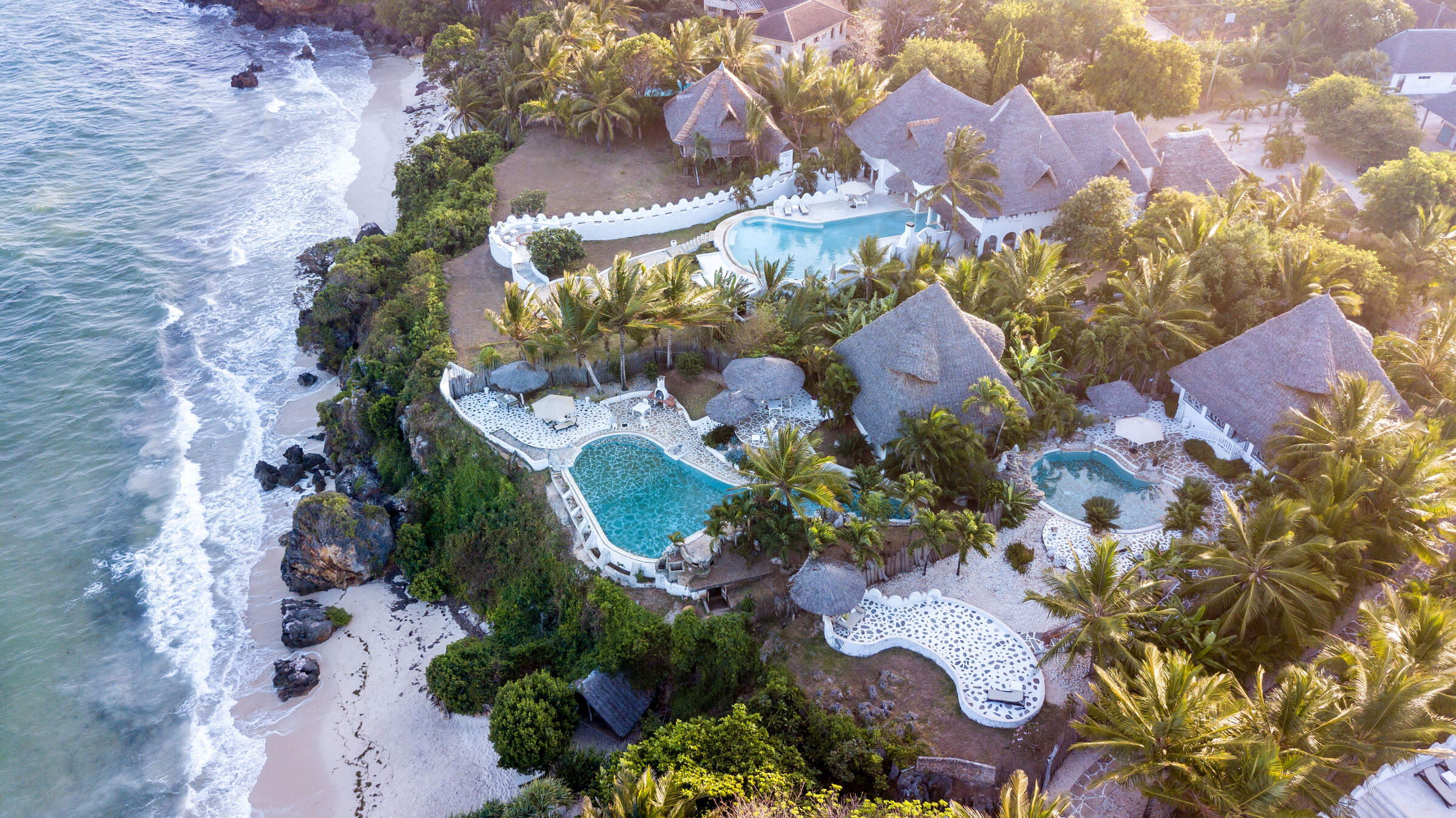
Msambweni Beach House
Msambweni Beach House is a secluded and luxurious boutique hotel on the southern Kenya coast, south of Diani Beach.
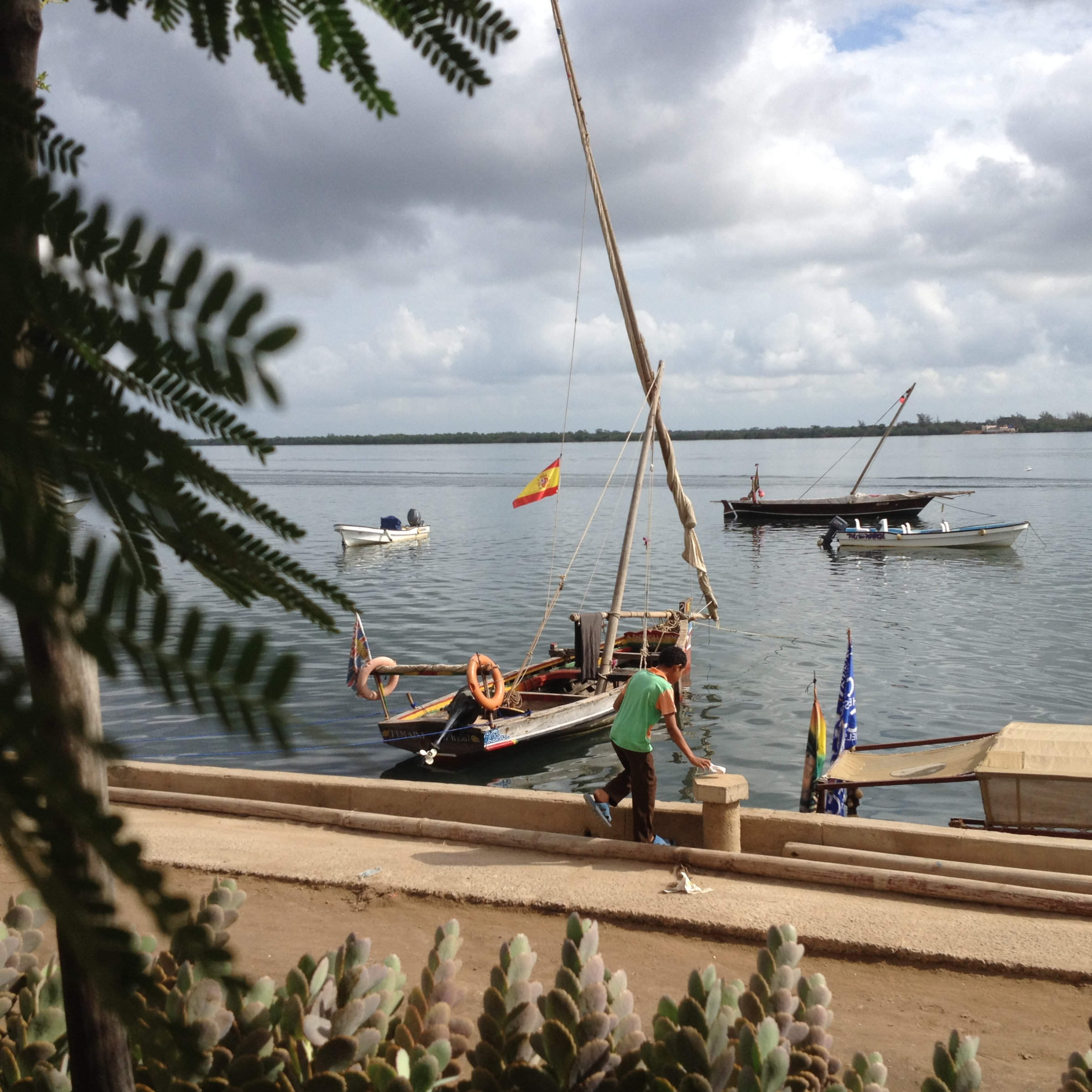
Lamu House
Lamu House is a boutique hotel on the waterfront in Lamu town, with a swimming pool, bar and terrace restaurant.
When to go to Kenya Coast
Our month by month guide: What it's like to visit The Sands at Chale Island in Kenya Coast
Jan
Feb
Mar
Apr
May
Jun
Jul
Aug
Sep
Oct
Nov
Dec
Kenya in January
Clear, hot days and warm nights make this high season a popular time for safaris and it’s also good for diving and snorkelling as water clarity is excellent and gets better as the dry season progresses. Most lodges and tented camps treat January after the New Year week is over, as mid-season, making it a good compromise in terms of value for money with reasonably reliable, dry weather and some greenery left in the landscape.
Expert Africa bases its description of climate and weather in January, like the other months of the year, on the climate records of roughly the last 100 years, and it's fair to say that the weather and seasons since the beginning of this century have been highly irregular and unpredictable.
- On average, January is the second driest month of the year
- Elephants dig waterholes in the dry riverbed in the Samburu reserve.
- Wildebeest and many antelope have their calving season, to February.
- Migrant birds are seen in huge numbers, especially in the Rift Valley.
- Sea water clarity around the coral reefs generally good.
Our view
Fantastic: the very best time to visit
Weather in January
Kenya in February
With the short dry season well established, the grass grazed down and wildlife gathering close to water points, this is still a good time for a safari. Good water clarity in the Indian Ocean's coastal waters makes for excellent diving and snorkelling conditions.
Expert Africa bases its description of climate and weather in February, like the other months of the year, on the climate records of roughly the last 100 years, and it's fair to say that the weather and seasons since the beginning of this century have been highly irregular and unpredictable.
- On average, February is the driest month of the year.
- It’s sometimes possible to swim with whale sharks at Diani Beach.
- Migrant birds are still seen everywhere, especially near water.
- This is usually peak calving season for wildebeest and many antelopes.
- This month is often the hottest of the year, especially on the coast.
Our view
A very good time to visit
Weather in February
Kenya in March
Hot, increasingly humid weather – with good diving and snorkelling conditions at the start of the month – gives way to rains and lower accommodation costs. Expert Africa bases its description of climate and weather in March, like the other months of the year, on the climate records of roughly the last 100 years, and predicting the seasons since the beginning of this century has been difficult.
March is the month when – traditionally – intensely hot conditions build up until a cloudburst finally happens at the end of the month or in early April, to relieve the humidity. As ever, regional variations across the country can greatly impact on visitors' experiences.
- Sea-water clarity is best for diving before the long rains start.
- Visitor numbers are low, though the Easter holidays can be busier.
- Night skies can be scintillatingly clear in early March.
- Cropped down savannah grasses can make it easier to see the wildlife.
- Temperartures climb high, especially at lower elevations.
Our view
A good time to visit, with pros & cons
Weather in March
Kenya in April
April sees the full onset of the southeast monsoon wind or kusi, which heralds the long rains. Temperatures drop soon after the rains are established and you’ll often have facilities largely to yourself in this more affordable low season, sometimes known as the "green season". The bush quickly springs to life, with greenery sprouting almost before your eyes. While you're likely to get a fair number of heavy showers, the breaks in the rain can yield sparklingly clear conditions.
With the dust settled and bright sun piercing the clouds, conditions can be sublime for photography, especially first thing in the morning or in the late afternoon with another storm brewing. You may be lucky, or you may find conditions very wet and muddy.
- A wet month, the coast often gets more than 300mm (12in) of rain.
- Sunny spells can provide great light for photography.
- Buffalo and zebra calving season often happens in this month.
- Baby crocodiles hatch, for example on Central Island in Lake Turkana.
- Palearctic migrant birds gather to fly north to breeding grounds.
Our view
A time to avoid if possible
Weather in April
Kenya in May
While game viewing can be trickier as vegetation runs riot, between the cloudbursts the colours and light are great for photography at this time of year. Expert Africa bases its description of climate and weather in May, like the other months of the year, on the climate records of roughly the last 100 years, and while it's reasonable to expect heavy rains in many parts during this month, especially on the coast, the rains don't always come evenly or in some areas come at all.
In an El Niño year, the so-called long rains that normally are established across much of the country by May can be meagre, to the despair of farmers. On the other hand in a La Niña year, the long rains can bring floods. On the coast, the monsoon winds make the climate much more predictable, with heavy rains common throughout this month.
- Frogs breed in the ponds in the Arabuko Sokoke Forest near Watamu.
- Wildebeest, impala and other grazers are in rut (the breeding season).
- Kilimanjaro looks its best as heavy rain falls as snow on the summit.
- There's a sharp peek of rainfall on the coast with many rainy days.
- Accommodation prices are uniformly low, while some camps close.
Our view
A time to avoid if possible
Weather in May
Kenya in June
The rains give way to cloudy, cooler weather, often making for comfortable conditions by the end of the month, especially in the highlands. Starting from mid-June or the beginning of July and running until the end of October, this is the high season, and accordingly has higher accommodation rates and – at least until early September – higher numbers of visitors.
While the early part of June can often be rainy on the coast, it can be a great time to go on safari, with fresh greenery, many young animals and good photographic conditions with clear air.
- The Taru Desert, inland from the coast, is carpeted with flowers.
- The Lake Turkana Cultural Festival is held in Loiyangalani.
- Madaraka Day (commemorating self rule) is 1 June.
- The annual Lewa marathon runs a course through the wildlife.
- The Diani Rules "sports" event rips up the rulebook at Diani Beach.
Our view
A good time to visit, with pros & cons
Weather in June
Kenya in July
Kenya’s “winter" season sets in (winter is a misnomer but locals feel the change), and the highlands can be rather grey. Skies are often cloudy and the days can be surprisingly cool, with an average daytime high in many highland safari areas of 15-20°C and night-time temperatures dropping below 10°C in Nairobi and the highlands. Lower parts of the country and the coast are usually warm and dry, typically reaching highs of around 25°C with lows in the high teens.
As this is the start of the high season, coinciding with the usual arrival of the wildebeest migration in the Maasai Mara, July is a busy month. Ask your Expert Africa specialist to advise on how to avoid the crowds, which is not that difficult to do.
- The wildebeest migration usually reaches the Maasai Mara in July.
- Simbi Lake (Kisumu) and Crater Lake (Naivasha) can attract flamingoes.
- Watersports start to pick up and some surfing is possible at Malindi.
- Afternoon thunderstorms are a common feature in the Maasai Mara.
- The sea can be choppy along the coast, making diving difficult.
Our view
A good time to visit, with pros & cons
Weather in July
Kenya in August
The Great Migration fills the plains of the Maasai Mara, and school’s out, so the park roads are full of tourists – ask your Expert Africa specialist for advice on crowd avoidance tactics. Choose a private conservancy rather than a public national park or national reserve for quieter conditions.
Like July, August is generally mild and relatively dry in the safari areas, but it can be very chilly in the highlands, even in the middle of the day, and hail occasionally falls above altitudes of around 2,400m (8,000ft). Nairobi can be disappointingly overcast, with low cloud.
- Apart from Christmas holidays, this is the busiest month of the year.
- Late August sees peak wildebeest drama at the Mara River crossings.
- Coastal winds are good for kite- and wind-surfing.
- Few mosquitoes are around at this generally dry time of year.
- The annual Camel Derby takes place in the Samburu capital, Maralal.
Our view
A good time to visit, with pros & cons
Weather in August
Kenya in September
The skies clearing of cloud signals the start of hot, dry weather with little chance of rain – and, after the first few days of the month, far fewer visitors – making the latter part of September a good time for a quieter safari. While early September is often good for dramatic migration crossings along the Mara River, you might consider deliberately postponing your trip until later in the month, when the migration can still be very impressive and visitor numbers fewer.
If tourist surges are somewhat predictable, however, the patterns of the wildebeest migration are more volatile, and like all of Expert Africa's climate and weather assessments, they are based on accumulated years of experience rather than guaranteed certainty.
- This is still high season, with prices to match.
- Many river crossings take place on the Mara river in both directions.
- Natural bush fires flush out insects and small animals for predators.
- The Rift Valley Music Festival takes place by Lake Naivasha.
- With school holidays over by early September, late-month is quieter.
Our view
Fantastic: the very best time to visit
Weather in September
Kenya in October
Still hot, mostly dry and not too busy, this is many people’s preferred month for a safari, and it’s also good for diving and snorkelling. The wildebeest and zebra herds of the great migration are often still to be seen, though in dwindling numbers. The swamps of Amboseli attract thirsty wildlife including large herds of elephants.
While we wouldn't expect much rain across most of the country this month, the climate has become so unpredictable that you can never say never, and the possibiity of the short rains – usually associated with November to mid-December, starting early, can't be discounted.
- This month sees the tail end of the great migration in the Mara.
- Palearctic migrant birds start to arrive, staying until March.
- Turtle nests hatch at Watamu, until November.
- Amboseli elephants focus on the swamps for their daily water.
- The Indian Ocean monsoon winds turn from southeast to northeast.
Our view
A very good time to visit
Weather in October
Kenya in November
The northeast monsoon wind or kaskazi heralds the start of the “short rains", usually some time in the second half of the month. From November to mid-December, this is the low season, and accordingly has lower accommodation rates and lower visitor numbers. Across most of the country you can expect warm, somewhat cloudy weather, with occasional heavy showers and localised flooding.
Expert Africa bases its description of the climate in November, like the other months of the year, on the records of roughly the last 100 years, and it's fair to say that the seasons since the beginning of this century have been highly irregular and unpredictable: some years the short rains don't come at all, or don't reach every part of the country. In an El Niño year, the November short rains can be very heavy, but in a La Niña year, they can fail completely.
- Swimming with dolphins in Lamu can be done from now until April.
- Birders gather at Ngulia in Tsavo West to ring Palearctic migrants.
- The Lamu Cultural Festival takes over the town and Lamu Creek.
- Agricultural shows often take place regional market towns.
- This is low season, so camps can be great value, with special offers.
Our view
A good time to visit, with pros & cons
Weather in November
Kenya in December
In a typical December, the rains usually finish by middle of the month, leaving the landscape looking its best, under clear blue skies, and heralding the start of the second peak tourist season from around 20 December to the first week of January. Our assessment of the likely weather in December, like the other months of the year, is based on climate records, and it's fair to say that the seasons since the beginning of this century have been highly irregular and unpredictable.
Christmas can sometimes be wet, but most years the rains have finished a week or two earlier, with the festive season ushering in the perfect combination of clear skies and sunshine by day and starry nights.
- Christmas and New Year are busy, with the lodges and camps full.
- Rates are highest after 24 Dec, with supplements on public holidays.
- Republic Day and Independence day are celebrated on 12 December.
- Good kite- and wind-surfing restarts, with strong northeasterly winds.
- Mango season begins, providing excitement for primates and elephants.
Our view
A good time to visit, with pros & cons
Weather in December

Looking for inspiration on where to travel next?
Visit our trip chooser to explore your options and find inspiration for your perfect African adventure
Inspire me